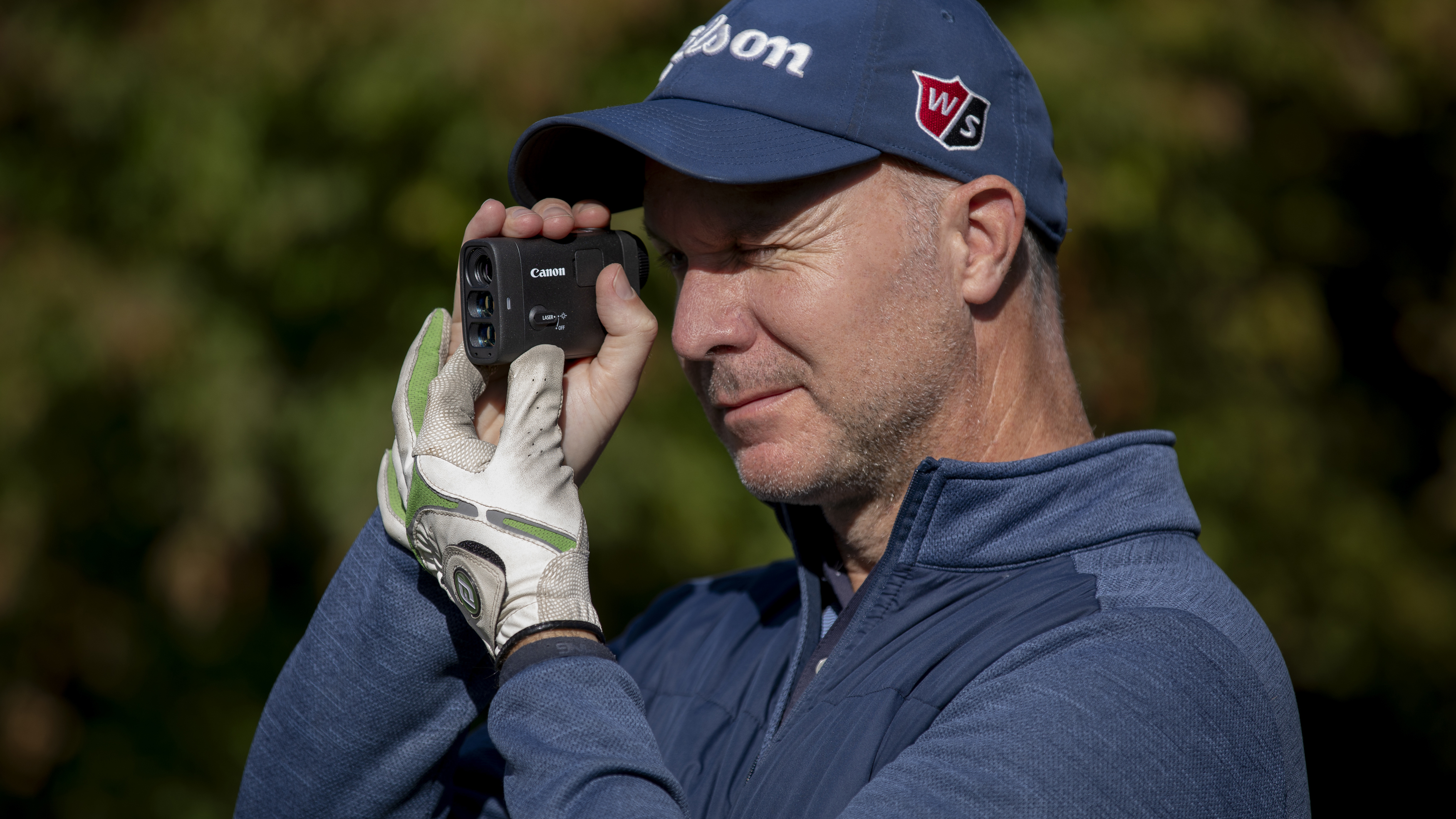
I’m editor of PhotoPlus: the Canon Magazine, a professional Canon photographer and keen amateur golfer, so I was very interested to test the new Canon PowerShot Golf laser rangefinder.
From a golfer's perspective, all you want is for a laser rangefinder to quickly lock focus on the flag on the green and to give you an accurate yardage, so you can choose the right golf club to get it close. If you have any doubt in how far it is, this doubt leads to bad swings, and bad results. So a good rangefinder can be a golfer’s best friend, and the gateway to better scores.
Canon’s PowerShot Golf rangefinder/camera is a pocket-sized device, yet powerful in specs; with a ⅓-inch CMOS sensor and 11-megapixel in camera, and 0.39-inch EVF (electronic viewfinder) with 2.36 million dots and refresh rate of 59.94fps, plus optical image stabilisation for a steady view.
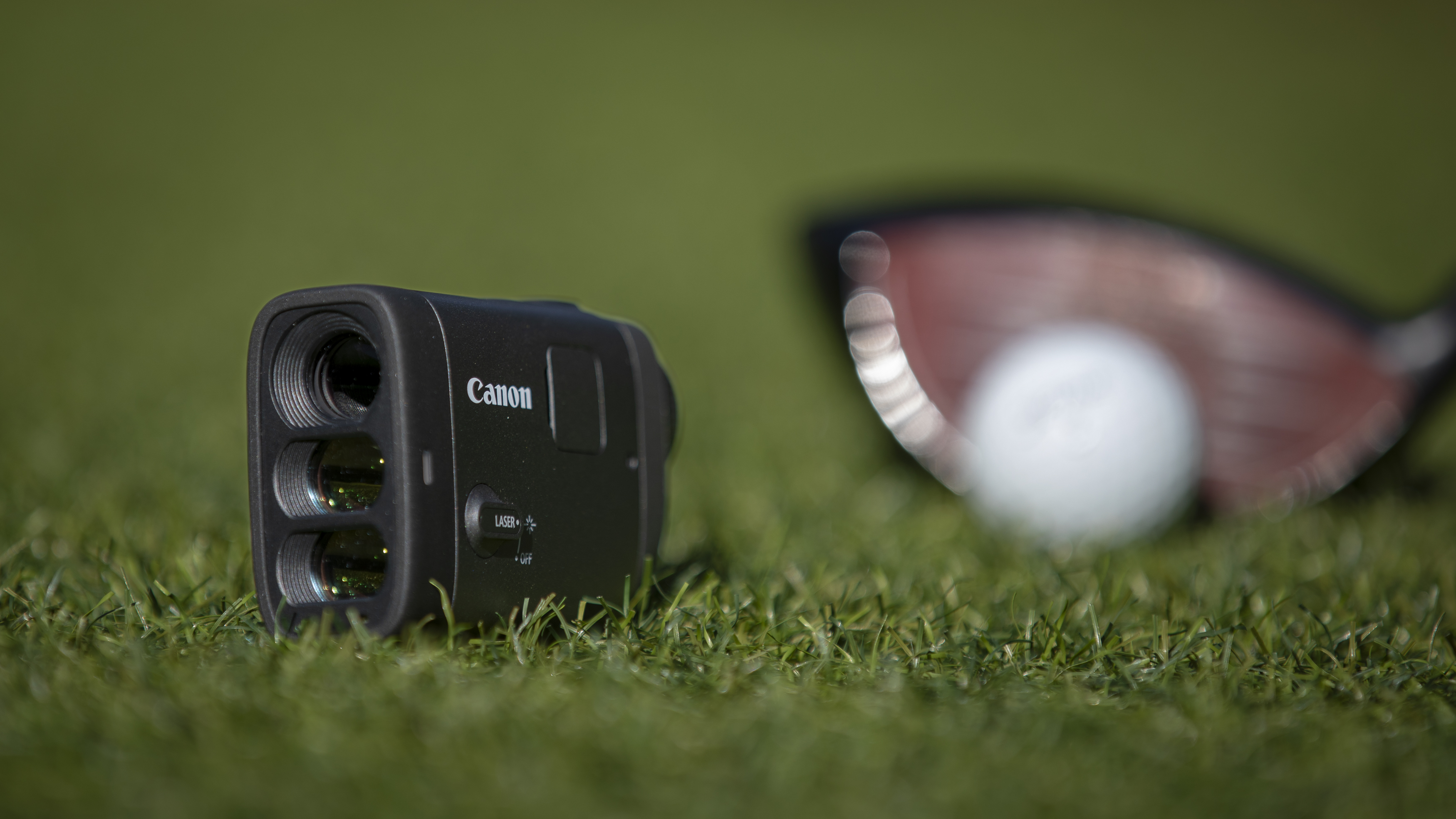
Rangefinders have an interesting design with what might look like three lenses on the front, and Canon’s PowerShot Golf uses this same design. The top one is the actual lens which is what you see through from the viewfinder, the other two ‘lenses’ below handle the laser stuff; the middle is a ‘laser-emitting diode for distance measurement’ and at the bottom a ‘laser-receiving sensor for accurate distance readings’.
These three amigos work in unison to obtain accurate readings. I can confirm the Canon PowerShot Golf provides highly accurate yardage readings, comparing the figures to other rangefinders, my Garmin GPS watch, and my golf-playing partner’s GPS screen on his hi-tech electric golf trolley.
The Canon PowerShot Golf has a 6x optical zoom, which is equivalent to around a 400mm telephoto lens in full-frame camera terms, plus a 12x digital zoom option.
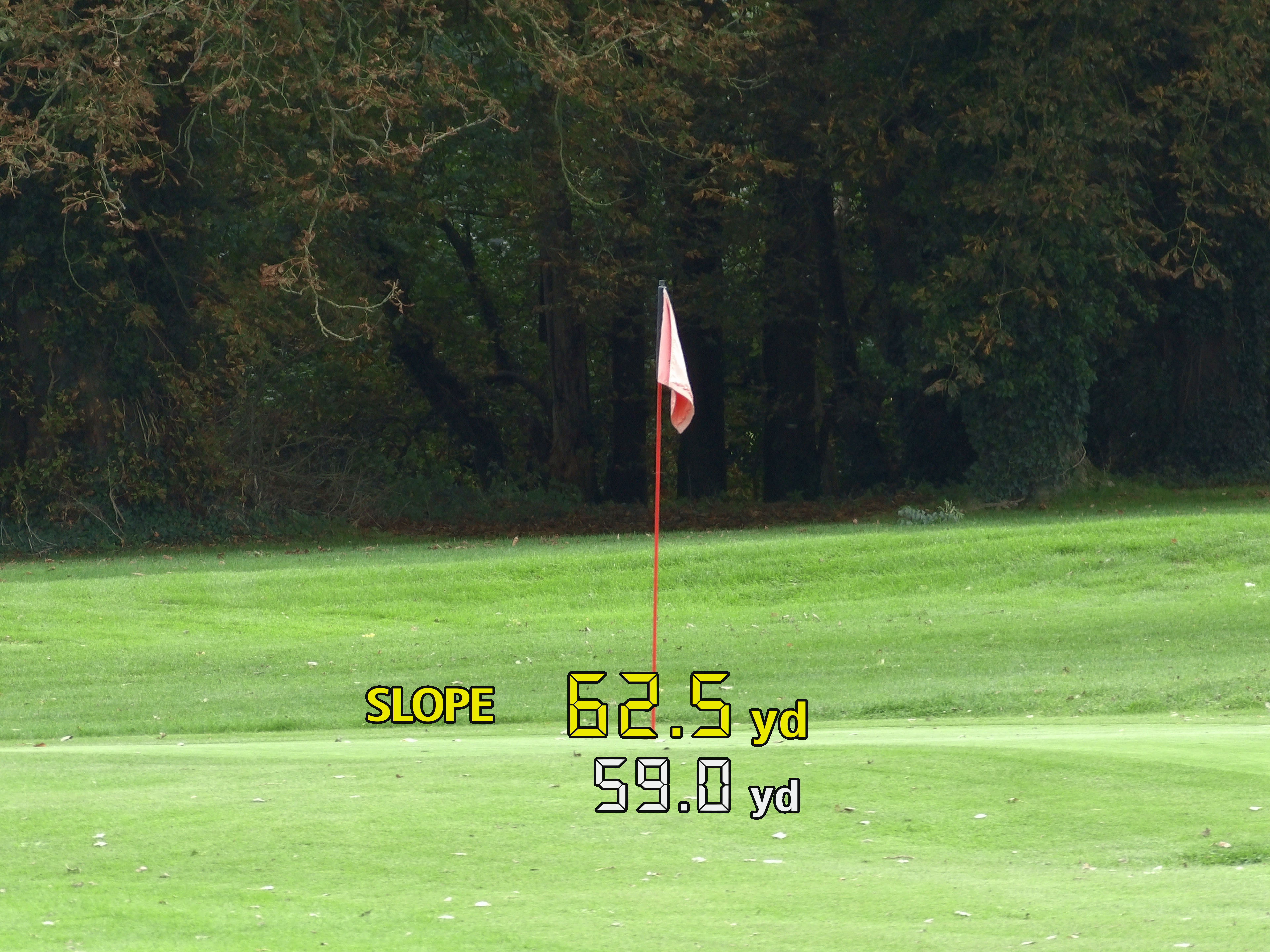
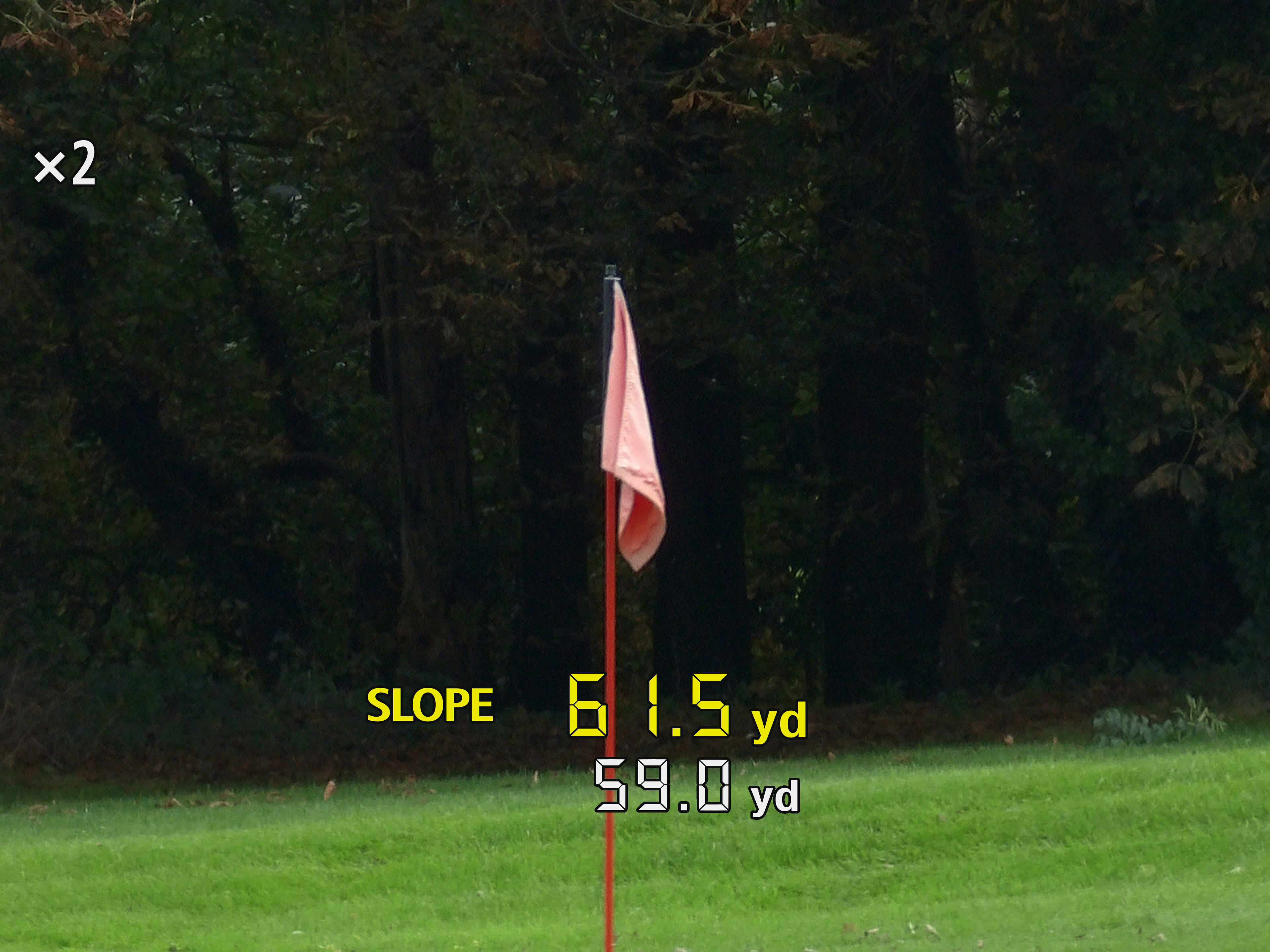
Color on the course
Compared to using the Bushnell (‘the No.1 Rangefinder in Golf’) Rangefinder Tour V4 Slope Edition I use, the Canon PowerShot Golf’s viewfinder is like 4K versus 48K!
This is thanks to its EVF - whereas most rangefinder have optical viewfinders. So instead of basic black-and-white figures and a small circle / crosshair on offer in the optical viewfinder as on Bushnell’s and other rangefinder, the Canon PowerShot Golf has a bright digital viewfinder that’s full color! A red crosshair grows from small to large once focused, plus yardage figures are in white, with the ‘Slope’ figure in yellow above (more on Slope stuff below). Plus there’s a green square when taking photos.
Non photographers may well find using the Canon PowerShot Golf tricky to begin with, as it has a shutter button like Canon cameras - rather than a button you press to switch on a rangefinder, then press again to focus on your intended target. For the Canon PowerShot Golf, you fully press the button to switch it on (a green flashing light appears at the rear to confirm), then you only ‘half press’ the button when you look through the viewfinder and focus on the flag, as you would with a camera. You get a reassuring vibration at the same time the yardage figures appear on screen, so you know you’ve achieved focus.
As a Canon photographer who uses EOS cameras, I found this shutter button felt very familiar and comfortable to use. Canon's PowerShot Golf has a 6x optical zoom, and an optional 12x digital zoom if you need it, although I rarely zoomed in any further on the flags as I could lock on to targets with the 6x optical zoom. It’s handy to have this extra digital reach for just-in-case scenarios, though; when I was struggling to focus on flags in deep shadow, for example.
Canon PowerShot Golf: Specifications
Canon PowerShot Golf: Design & Handling
Canon's PowerShot Golf is powerful and also pocket-sized and lightweight, at approx 31 × 58.9 × 91.2mm and weighing 151g. It fits in your palm and is barely bigger or heavier than a deck of playing cards. Canon also says it’s ‘water-resistant to IPX4 standards’ so you use it on rainy days – I’m a fair-weather golfer so didn’t test this out!
The Canon PowerShot Golf comes in a little case with a magnetic button to ensure you clip it closed. I used the velcro strap on the case to attach it to my golf bag for easy access to the rangefinder. You can attach it to your belt if you want, although I found it distracting having it there when swinging my club. It will also fit inside jacket pockets (fine when playing in cooler conditions and you’re wearing one) and although it could slip into my shorts and trousers pockets, again I found it distracting as it stuck out when hitting shots.
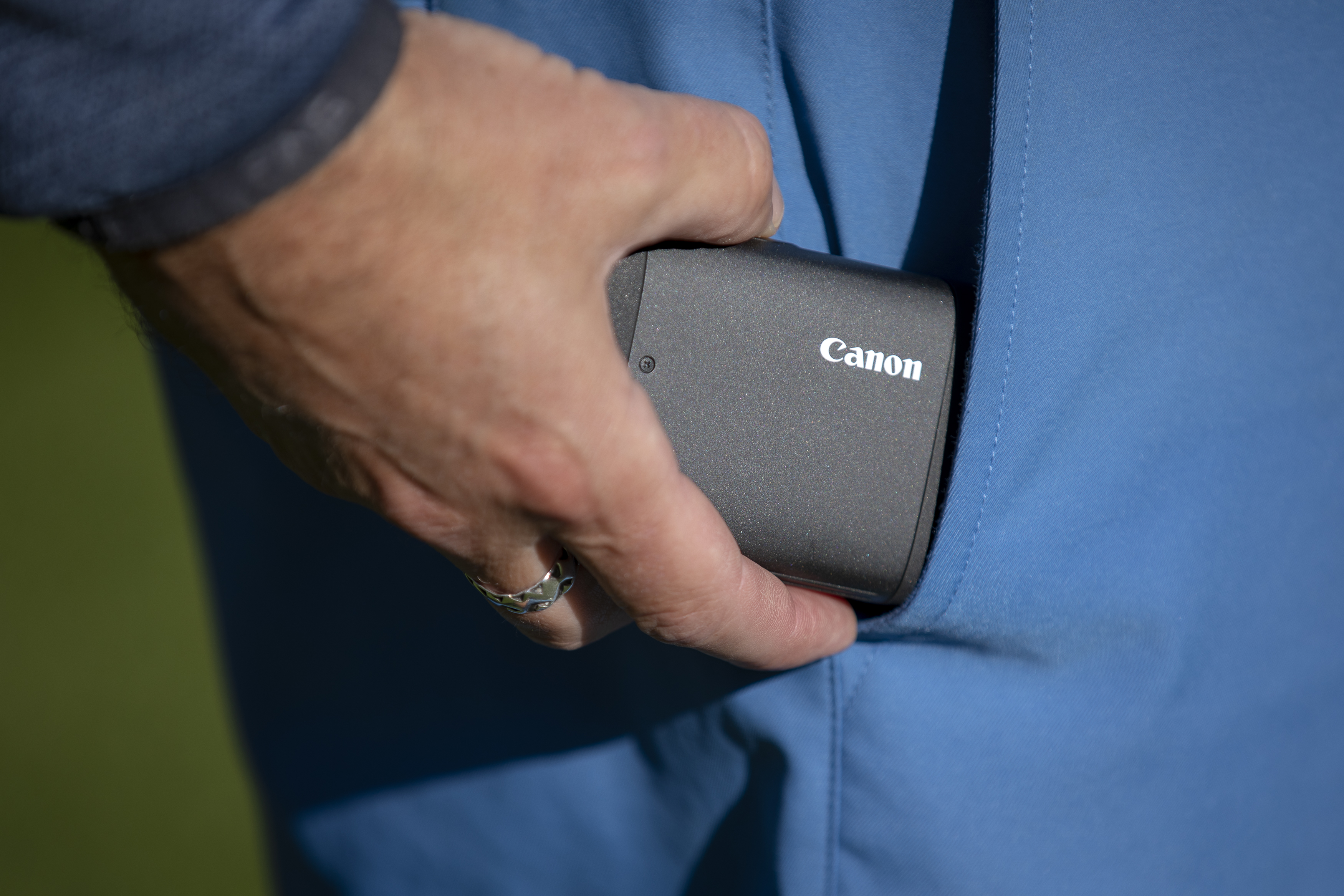
Canon menu system
A big bonus of Canon producing the PowerShot Golf is you have access to their clear and colourful menu systems to change settings and other options, via the menu button. Canon’s menus are much easier to understand, compared to other rangefinders where you have to press and hold one button and cycle through options by highlighting mono icons, and selecting Yes or No etc.
It’s fiddly to use the menu to begin with, as you have to look through the electronic viewfinder, while using two fingers on top to press the main button, menu button, cycle through options, and your thumb on the zoom and video button below the viewfinder.
You have options like to ‘play’ images, erase them, and format the card, and to change Mode from Range to Range+Photo, Slope on or off, Unit in yards or metres, and Vibration on and off. You can also adjust things like Exposure Compensation in the menu.
I did find the menu is decent when you get used to it, and it’s easy to look through the viewfinder to check images in play mode – and being relieved how images look a bit better than they did during capture via the EVF.
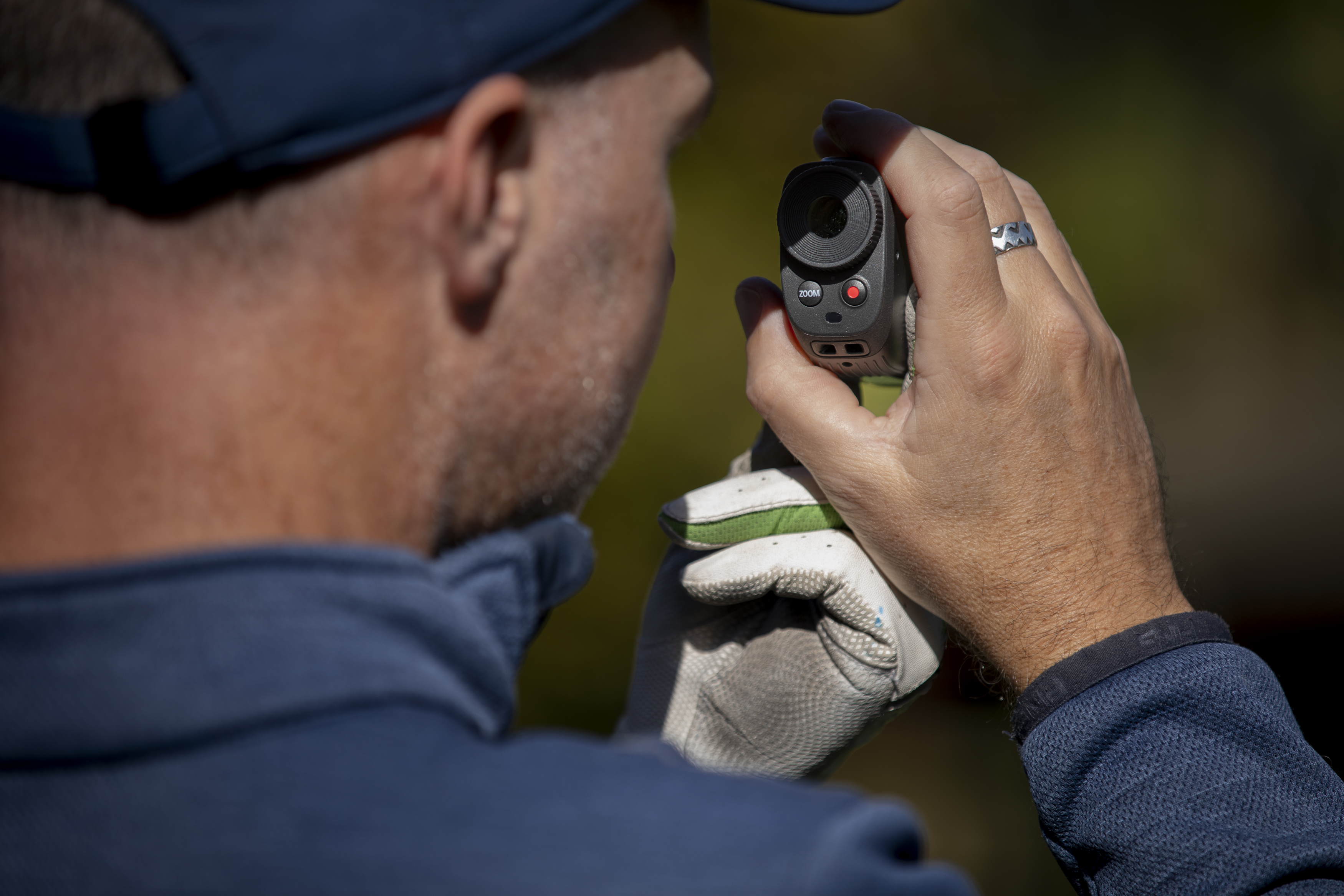
Slope mode explained
The Canon PowerShot Golf has the Slope mode which is useful to us golfers, as courses are often up and down hills, with fairways positioned above greens. What the heck is a ‘Slope rating’ you may well ask? It’s simply the adjusted distance when you are hitting a golf shot up to green above, or down to a green below you.
So if you have a shot that’s downhill or uphill, it gives you the ‘playing’ distance. For non golfers, this is very useful as, roughly 1 yard of elevation change equals 1 yard of distance change. So, for example, a 150 yard shot up to a green 10 yards above where you and and your ball are, will require a shot of approximately 160 yards, and that could be the difference between using a 7 iron, instead of an 8 iron you’d use for a 150-yard shot if there is no elevation.
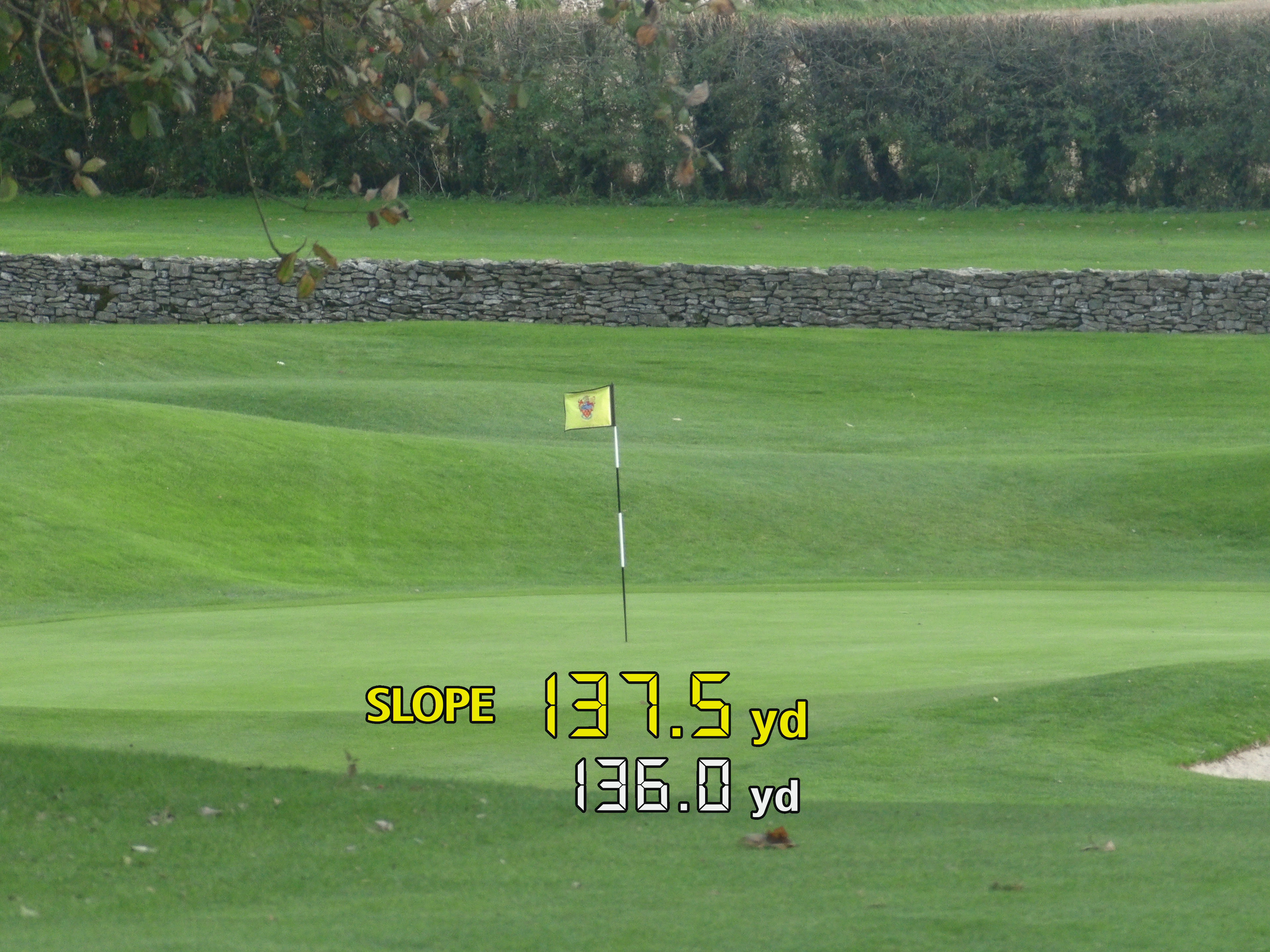
You can switch Slope on or off in the menu - which is good, as you aren’t allowed to use a rangefinder in Slope modes in golf competitions (go figure). A blinking blue light on the front shows when Slope mode is off, also acting as an indicator so others know you’re playing fair.
The Canon PowerShot Golf also gives you a distance down to half a yard. Impressive, but unnecessary. So you have 167.5 yards to the pin? This is great that it's accurate down to half a yard, but not even Rory McIlroy can hit shots to half-yard distances!
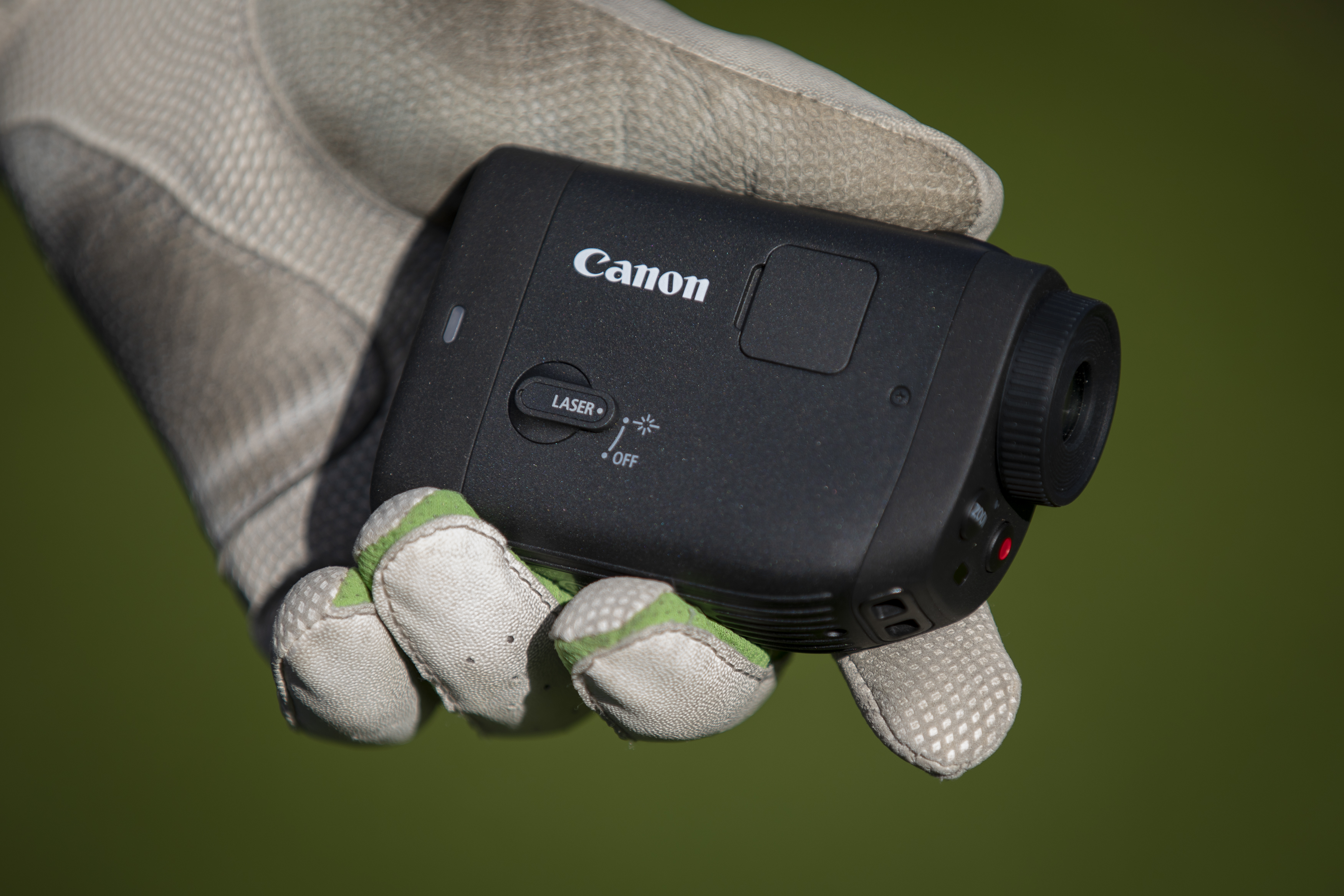
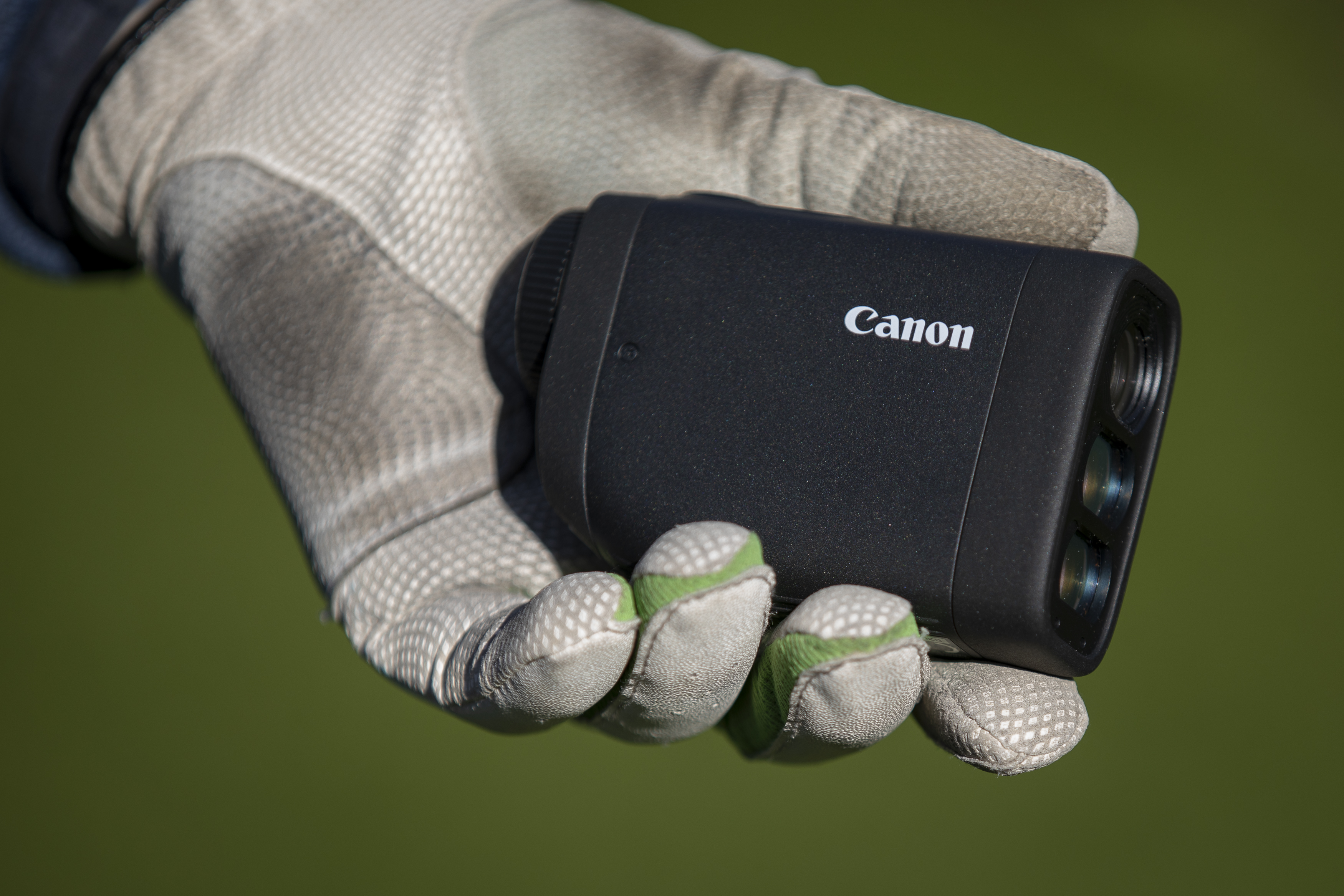
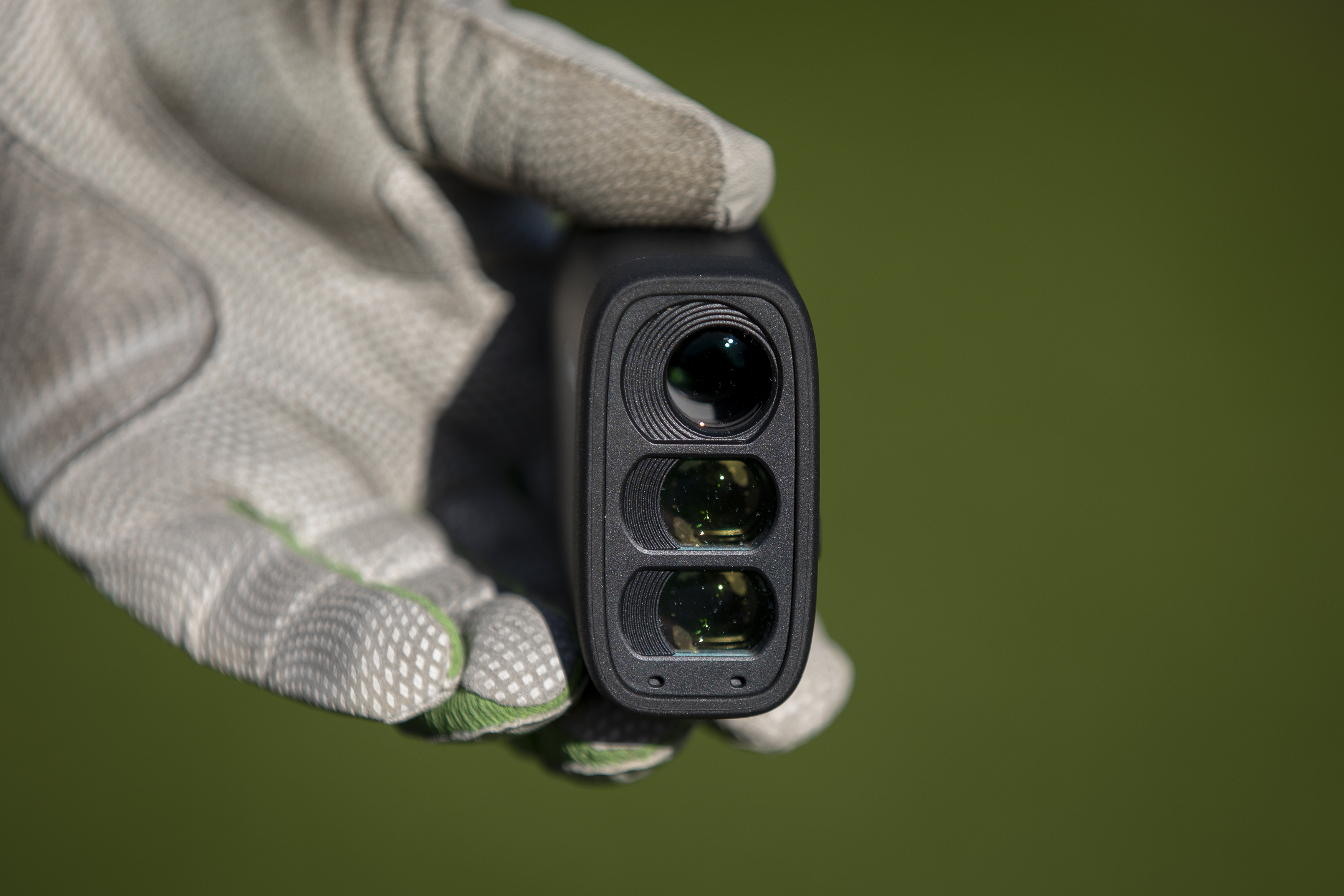
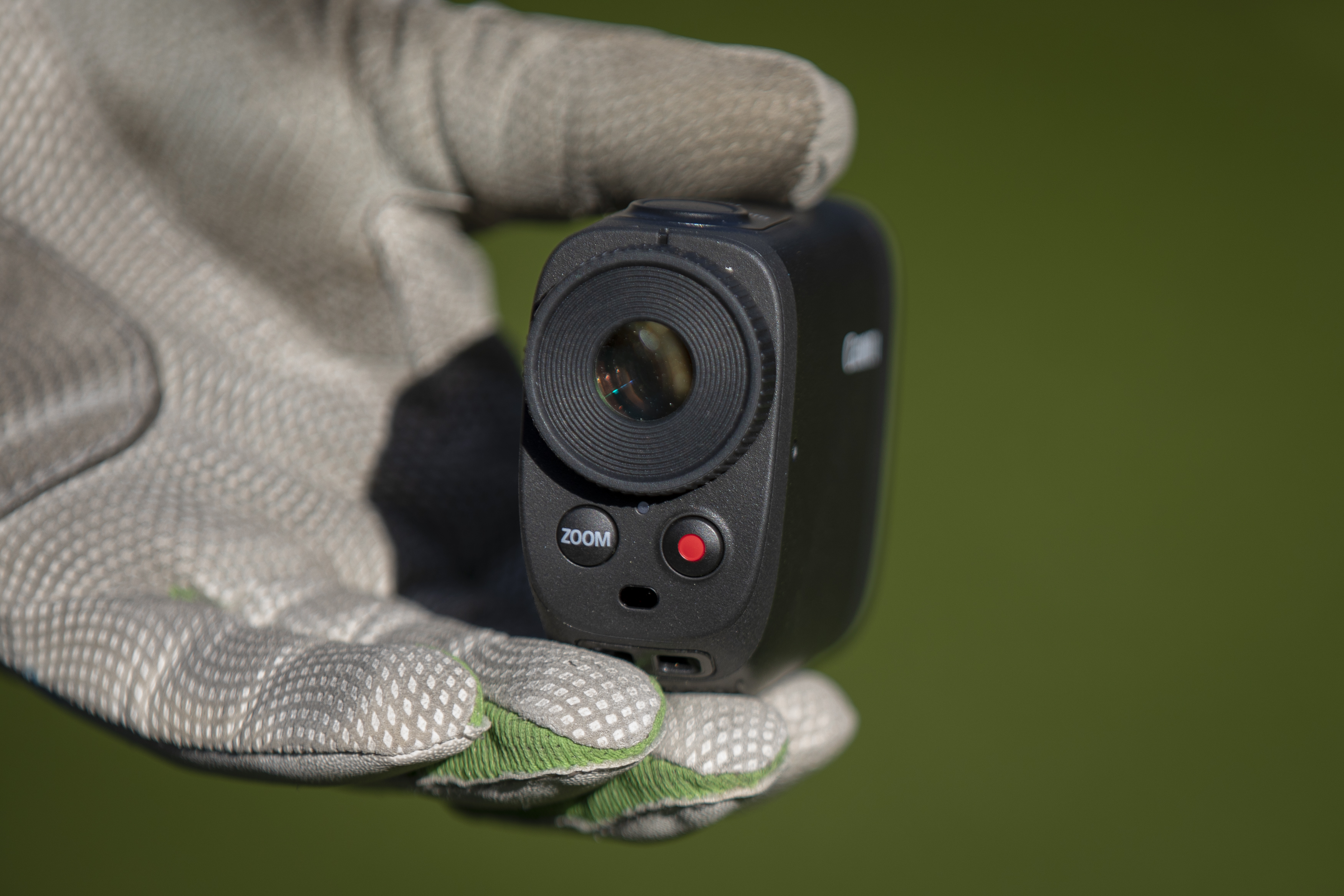
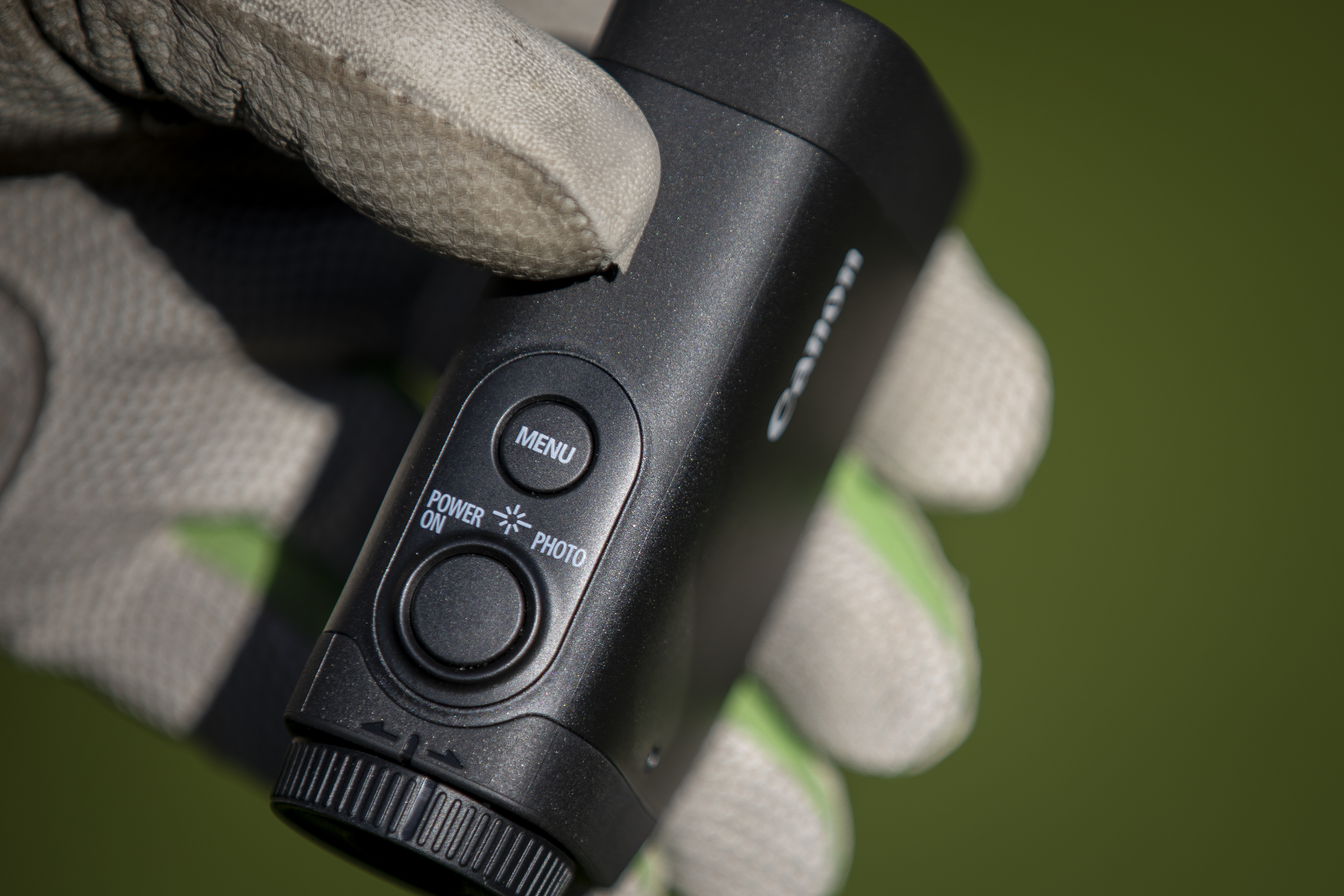
The big difference between the Canon PowerShot Golf and other traditional golf rangefinders is it enables you to take photos and videos while on the golf course (and elsewhere I suppose if you still happen to have it in your pocket).
When you have the Canon's PowerShot Golf in Range+Photo mode you get an extra green box around the red crosshairs so you know you're in this mode. You focus as normal with a half-press, and a full-press of the button takes a photo, and the viewfinder goes black for confirmation.
It captures 11MP stills and Full HD video. But using what is basically a miniature compact camera you hold sideways, but with a fixed focal length of 400mm, means you’re restricted in what you can actually photograph, as well as tricky to try and use it to take these photos as you’re holding like a rangefinder, not side on like a camera which is easier to hold two-handed.
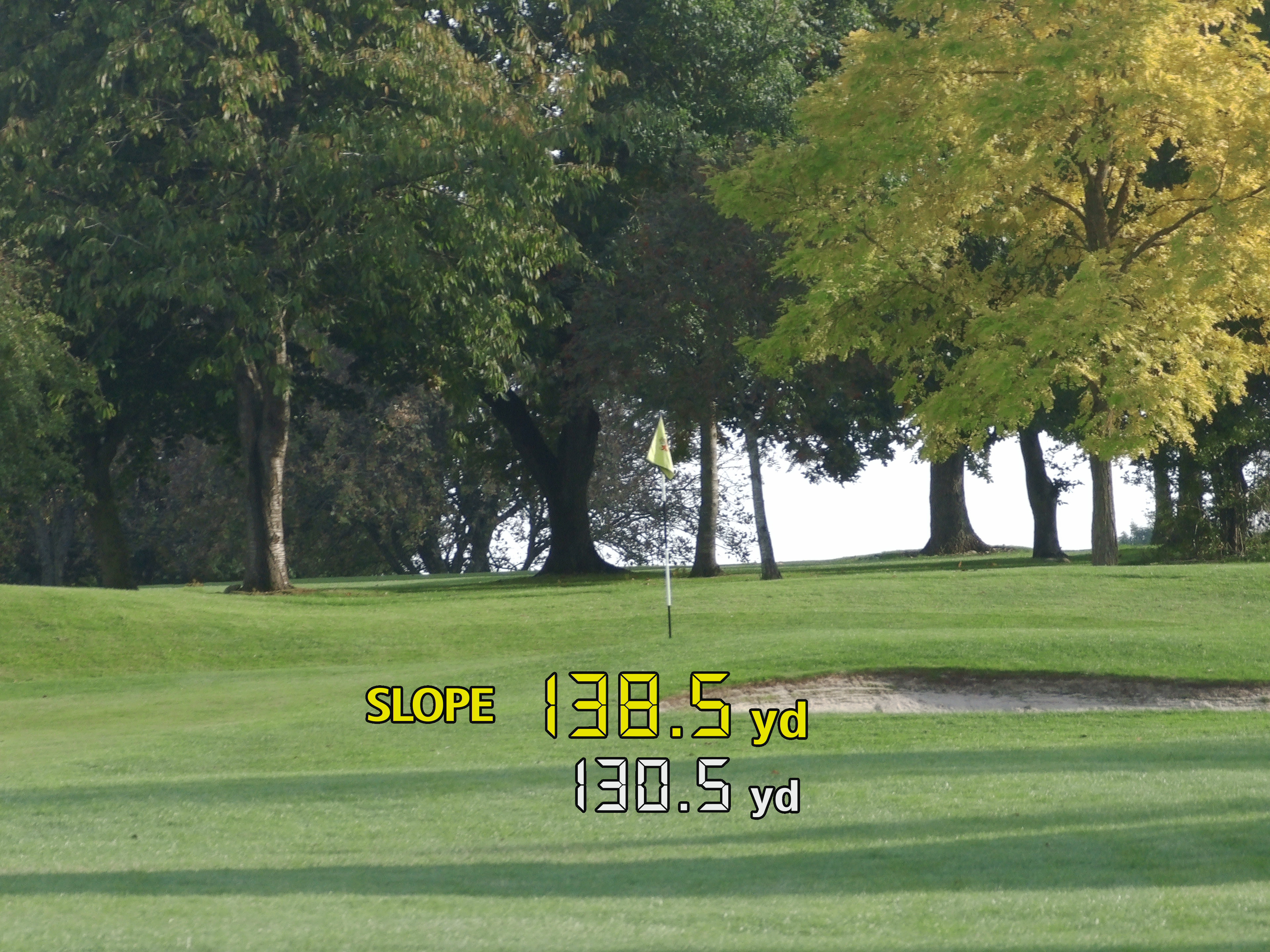
It's a nice bonus to be able to take photos 'with superimposed distance information on the golf course' - which I guess, could be useful when teeing off par 3 holes on your local golf course, as the distance to greens is fairly consistent, and so having it for reference again might be helpful. However, markers on the tee areas move, and pin positions move every few days, plus distances to flags from positions in the fairways will be different every time you play as it depends where your ball finishes... so while it’s cool to have a photo of a flag with the distances recorded on top, I can’t see myself referring to those images ever again.
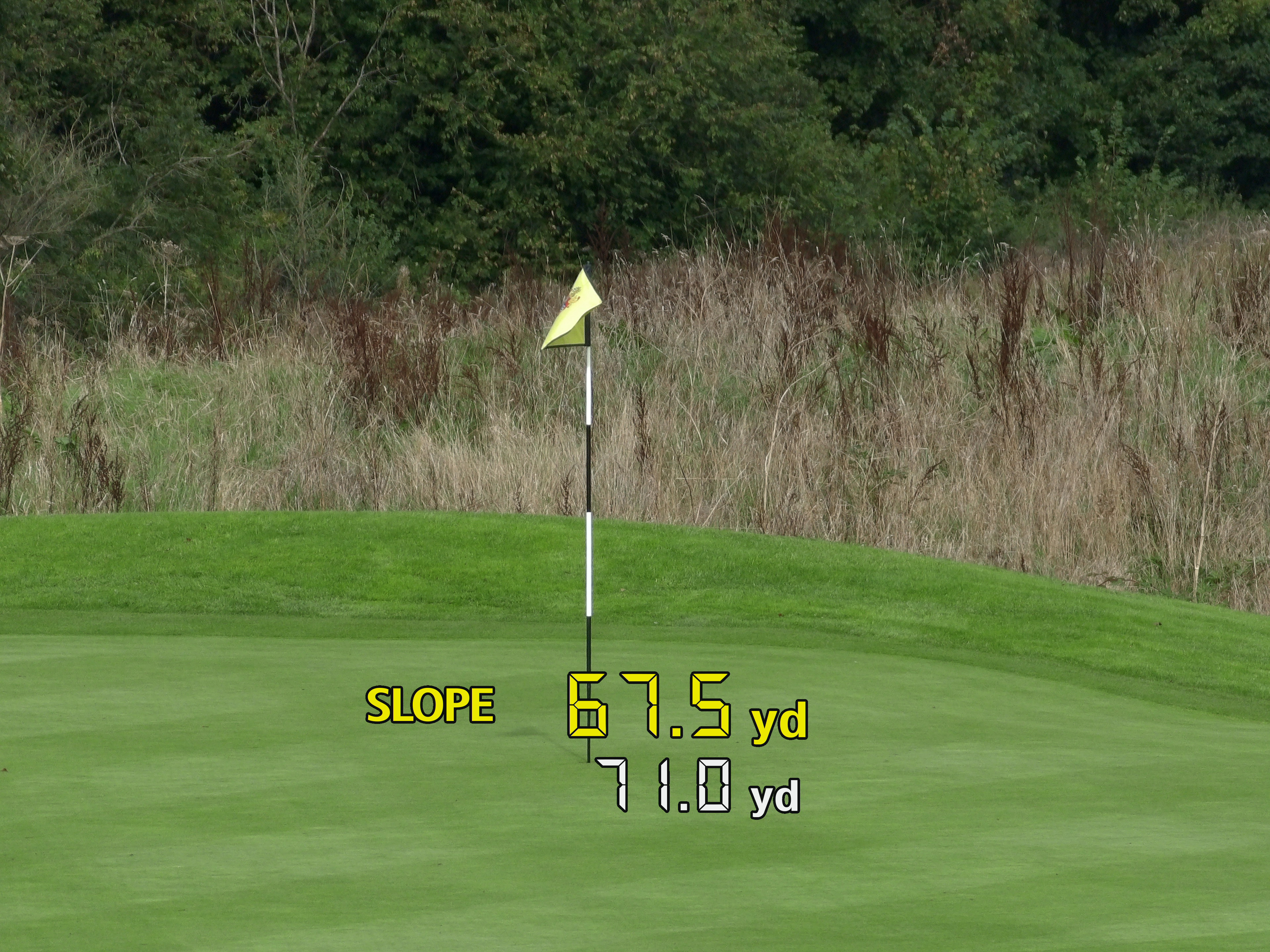
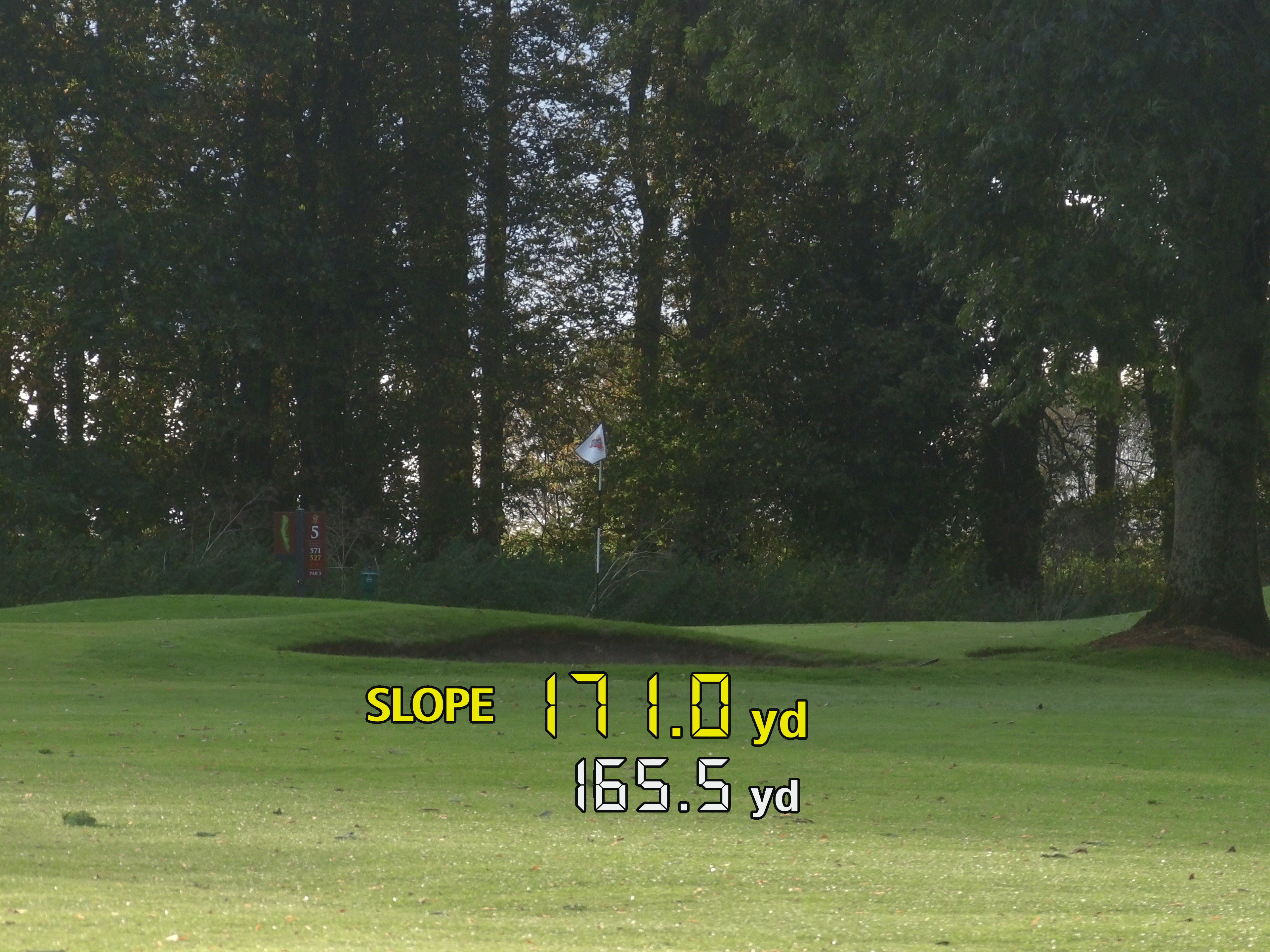

Canon PowerShot Golf: Golf Performance
I tried out the Canon PowerShot Golf when I was out playing golf on my local course, using it over a handful of different rounds, in different lighting conditions, from bright sunshine in the middle of the day, to low light near sunset.
I found the Canon PowerShot Golf easy to use, and once I got used to pointing and aiming it at the flags in the distance, it was quick to focus and give me an accurate yardage. I could also use it to zap distances to carry a shot over a bunker or water. More than once I was able to pick the right club for the shot to the green, helping me to score better than I would have if I wasn’t using it. Seeing birdies on my scorecard instead of bogeys was a big bonus!
Although it’s small - and the smaller rangefinders are, the harder they are to hold still enough to focus - thanks to Canon’s image stabilisation it’s really easy to lock on to flags even 200+ yards away. Canon says it’s able to focus on objects from 7 yards to 800 yards. I needed to use two hands generally to hold it steady - such as on colder days with cold hands - and that’s the standard technique for using rangefinders for the best accuracy.
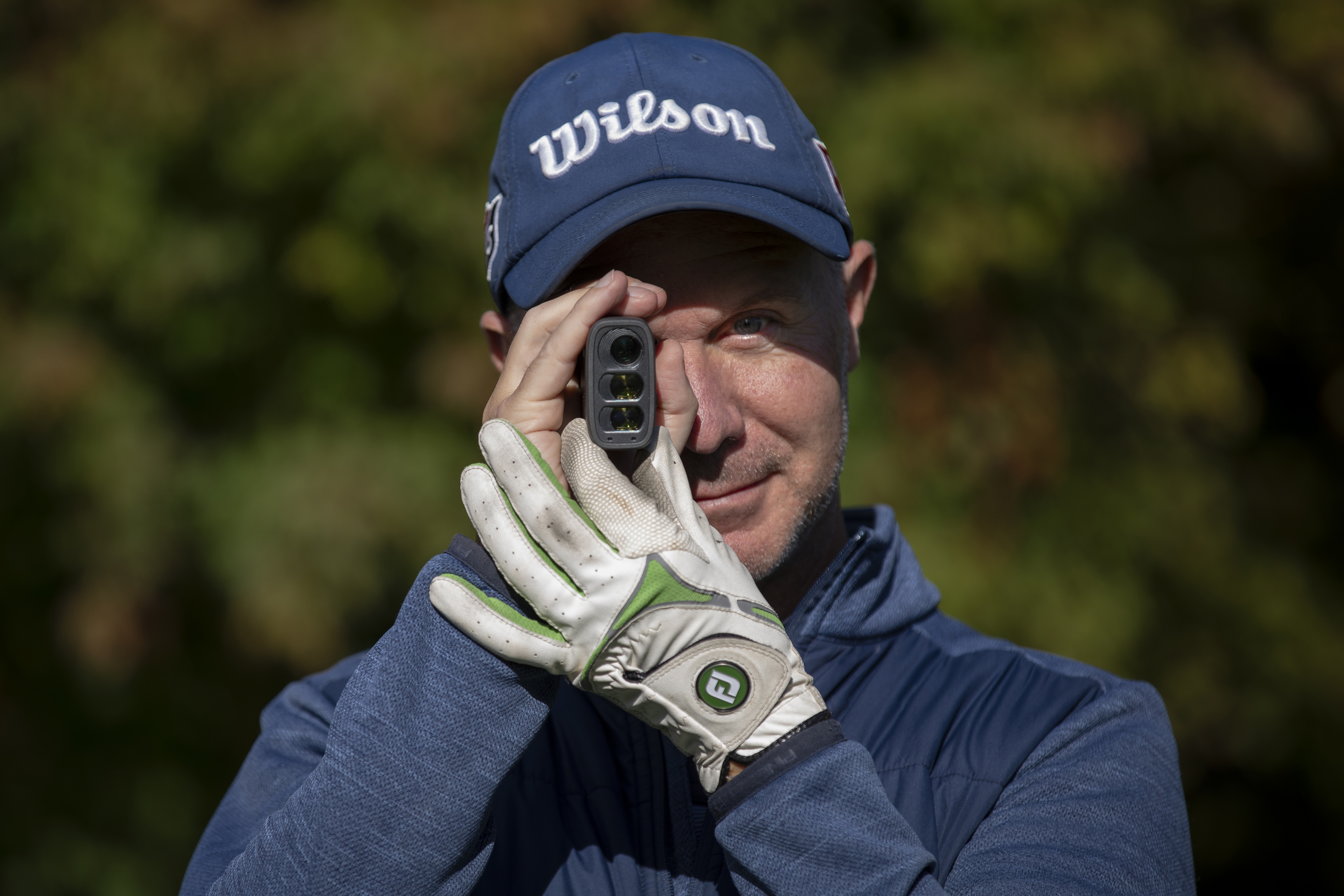
Comparing Canon's PowerShot Golf to a rangefinder without stabilization is like using a 400mm telephoto lens with and without IS. Shaky scenes! The PowerShot Golf was so much steadier when looking through the viewfinder - making it much easier to lock focus on the flag fluttering on the green beyond. Note that newer, more expensive golf laser rangefinders have stabilization these days, so Canon isn’t unique in this regard.
However, there’s one area where Canon’s rangefinder fell short, and this is a common problem with all rangefinders - when there’s trees and other foliage and distracting elements directly behind the thin pin or flag you’re targeting, the rangefinder will often focus on the stuff behind the flag, giving you an inaccurate yardage. It didn’t matter how much I tried to get the PowerShot to focus on the flag, when there’s a bunch of skinny trees right behind, with more contrasting bits for it to focus on, it will focus on that instead.
Canon PowerShot Golf: Camera Performance
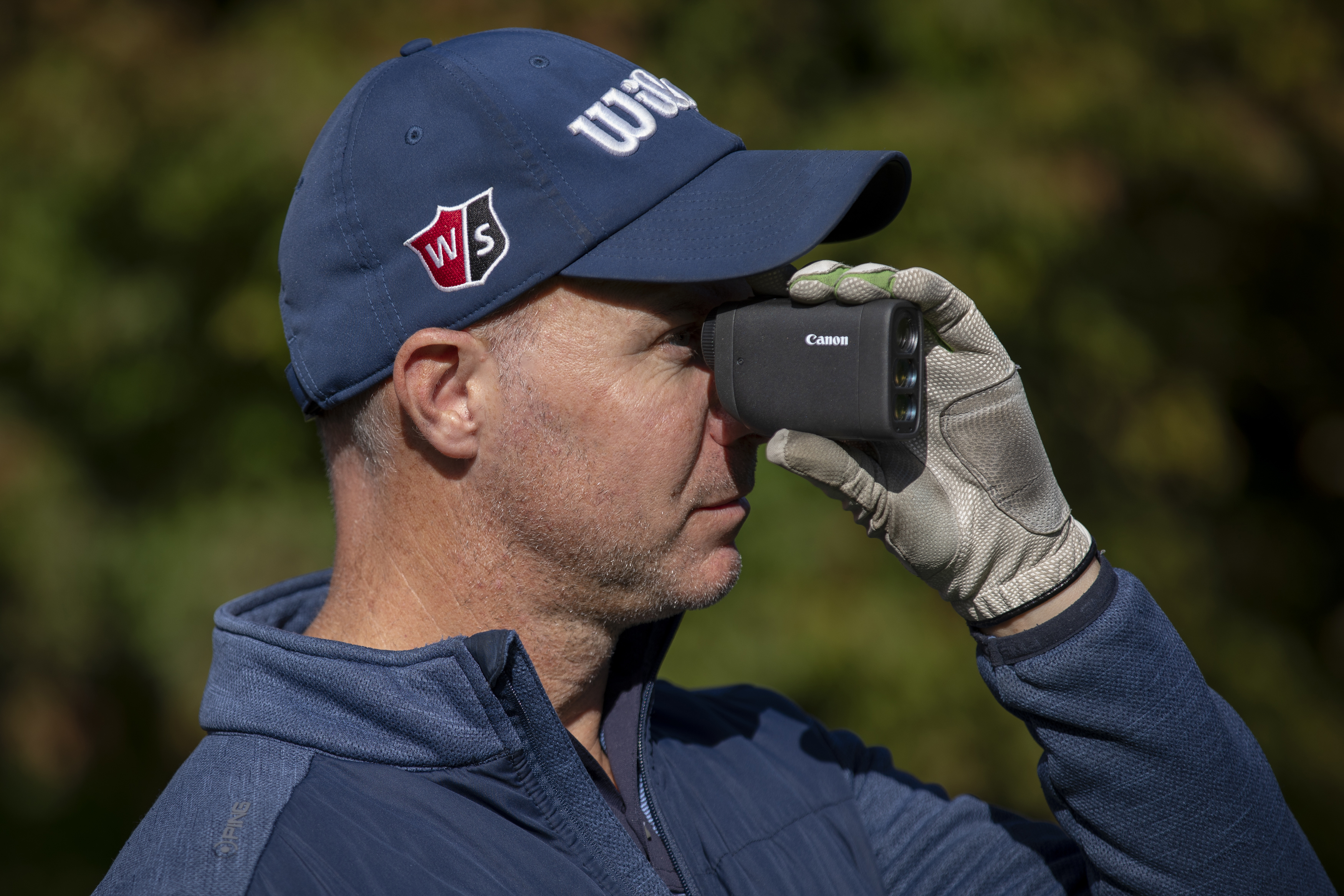
Canon says this on taking photos with the PowerShot Golf: “Create a personal course diary, complete with voice memos to record a breakdown of every shot.
In the event of disputes or questions about rule compliance, golfers can use the camera to document their lie, the position of their ball, or any obstacles in their path. This visual evidence can help settle disagreements and maintain the integrity of the game.
The built-in camera is perfect for documenting those unforgettable moments, to remember a breathtaking course, for educational purposes, to track progress or even to share a winning swing on social media.”
They make a good point that you can capture basic course photos to use for reference, but I’d respectfully respond to that and say it’s almost impossible to photograph anything or anyone remotely near you, such as a golf ball in front of you, or a player nearby. This is due to the closest focusing distance, which I found really restrictive. For photos and video the closest focusing distance is approx 4m, which increases to approx 6.4m when in the Range+Photo mode I was usually using. I often found I was too close to focus on whatever or whoever I was trying to photograph.
I needed to be at least 50 yards away from anyone I might want to take a photo of during a round. So the Canon PowerShot Golf was useful for getting a quick pic of my golf playing partner when they were across the otherside of the fairway, but it was no use if I wanted to get a photo when we were both on the green, as I was always too close to be able to focus.
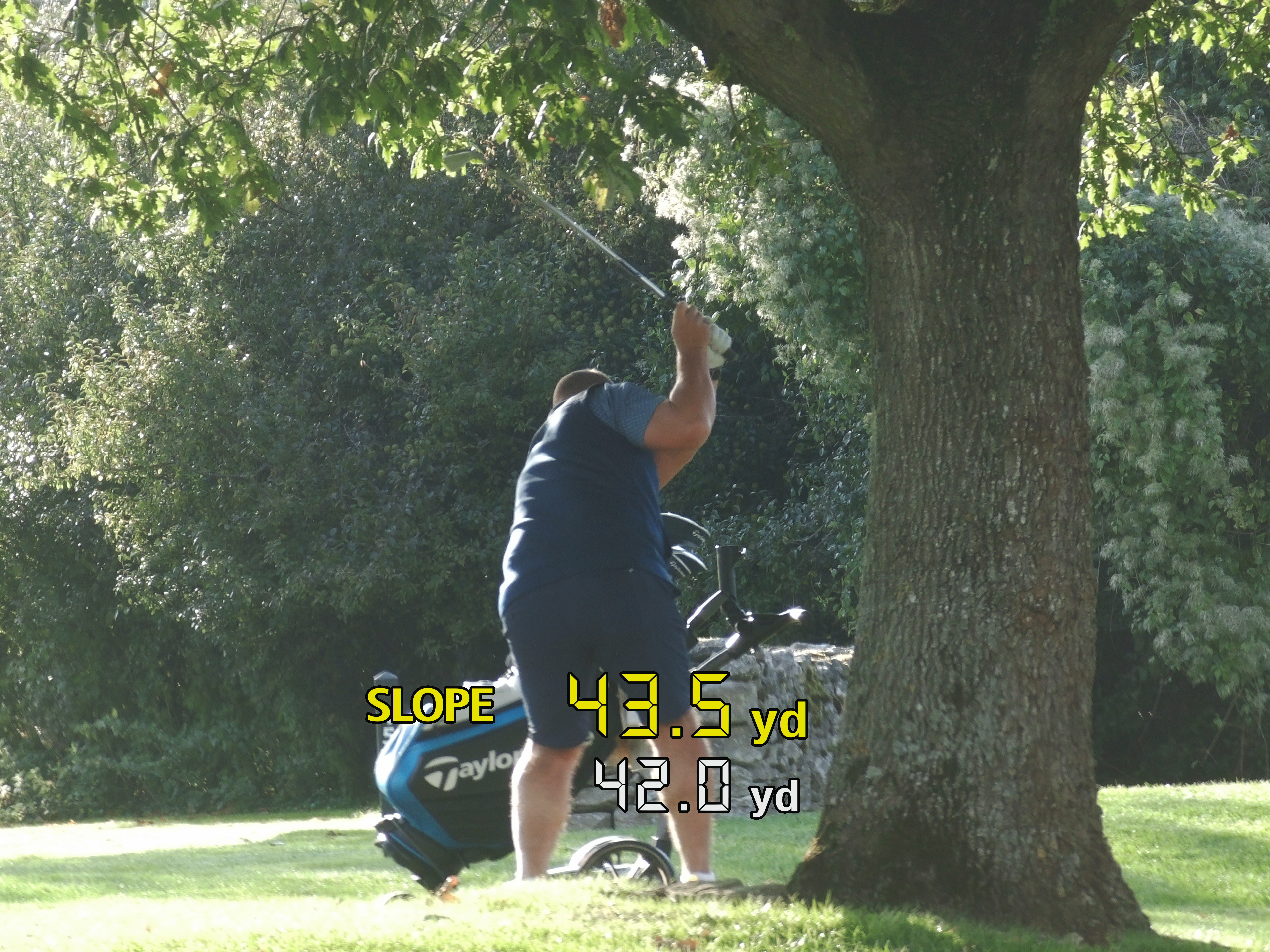
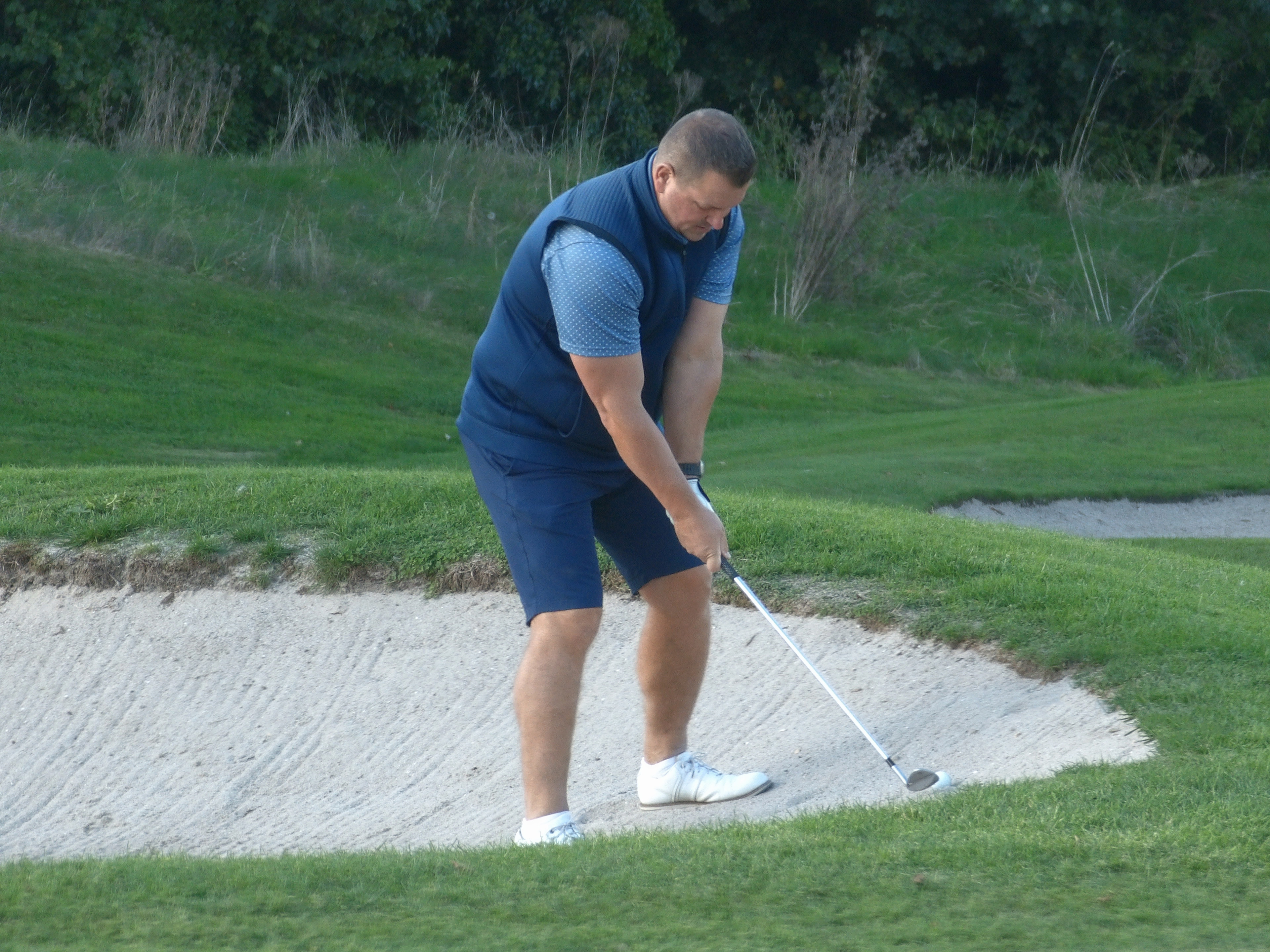
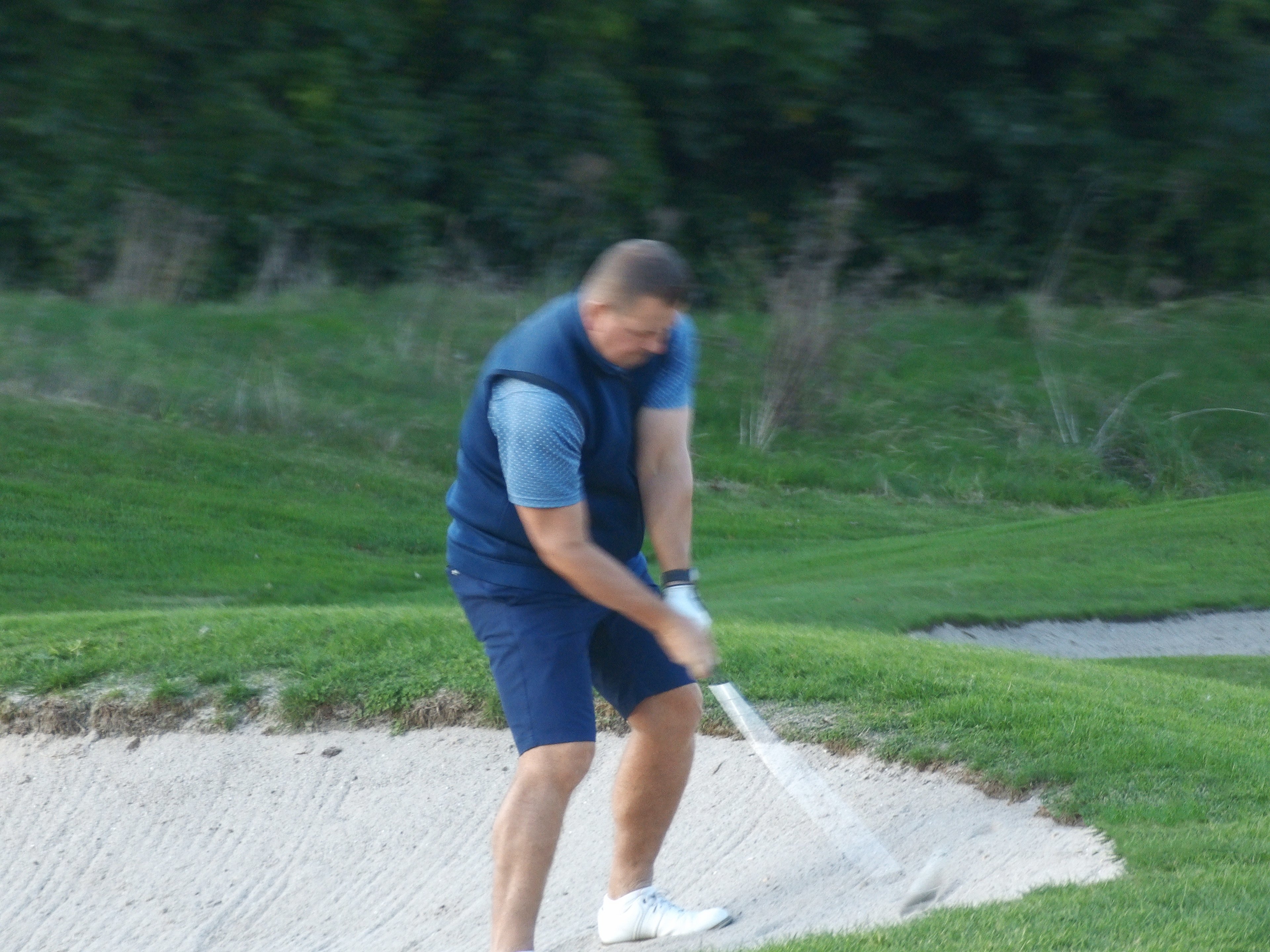
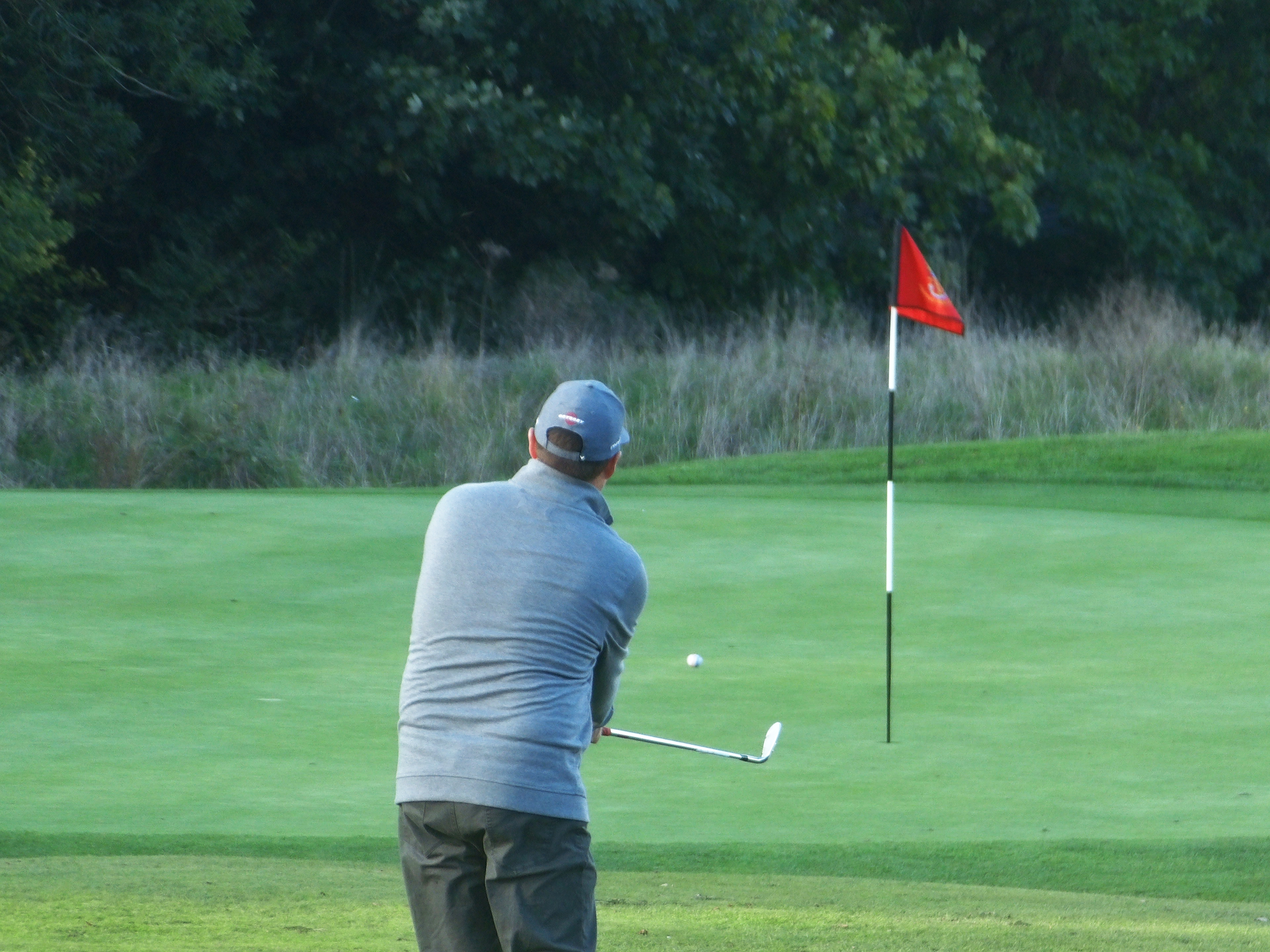

It was fun to attempt to take a few shots of my partners playing once I overcame focus distance issues, but disappointingly, the just camera wasn’t fast enough to get the shots, so action photos were mostly blurry. Sadly, while Canon PowerShot Golf was very quick to focus on flags, it’s slower to focus on golfers, and there’s also a slight lag when you take a shot - so it takes patience and practice to even try and get sharp shots.
When the lens opening is only 12mm in diameter, and camera has a 1/3-inch 11MP sensor, image quality and focusing for images is never going to be great.
Plus the camera’s shutter speeds were too slow for golfing action shots, and too slow for the effective 400m telephoto focal length as well - which equals the double trouble of motion blur and camera shake blur!
The camera for stills is all automatic so you can’t set higher ISOs or faster shutter speeds, although there is an option to adjust exposure compensation to brighten or darken exposures.
When I checked the EXIF data of JPGs I’d downloaded to my laptop, on cloudy autumn/fall days, it only offered a shutter speed of 1/100 sec, and f/3.9 and ISO800. In sunny conditions if faired better with 1/1000 sec, f/3.9 and ISO100, but even these exposures made it difficult to get usable photos of golfers mid swing.
I also found the camera can also struggle to expose for high-contrast scenes or subjects - such as a golfer in sunlight, with dark shadows behind, or vice versa.
The Canon PowerShot Golf is more than just a rangefinder. You have the option to turn off the laser using the switch on the side, so you can take photos and videos without yardage information on top. It was quite fun to head to my local countryside to use the Canon PowerShot Golf just as a camera. Having a 400mm camera/lens in my pocket was a unique proposition, but in reality it wasn’t entirely practical.
With the electronic viewfinder, I could frame up on faraway elements within landscapes, and could focus on clouds miles away in the sky, just because I could. I also tried photographing some local wildlife but the camera struggled to take sharp shots if they were moving, even slowly, like ducks on the water.
Image quality is as you might expect for a small 1/3in sensor 11MP camera, via a very small 400mm f/3.9 lens - it’s not great to be honest, compared by modern camera or smartphone camera standards. Even in sunny conditions the photo quality isn’t what you’d hope, and images are pretty noisy even at low ISOs around 250 and 320.
I found a good trick is to turn the PowerShot Golf on its side – it feels weird and fiddly to hold it and press the shutter button now on the side – but it means you can take portrait / vertical images if you like!
As the Canon PowerShot Golf records JPGs only (images are 3840 x 2880 pixels) it means there’s not much data to retrieve when looking at images in Photoshop. I did attempt to edit a landscape image in Photoshop to enhance it, and it would be fine for sharing on social media, but not for any other use.
Canon PowerShot Golf: Sample Photos
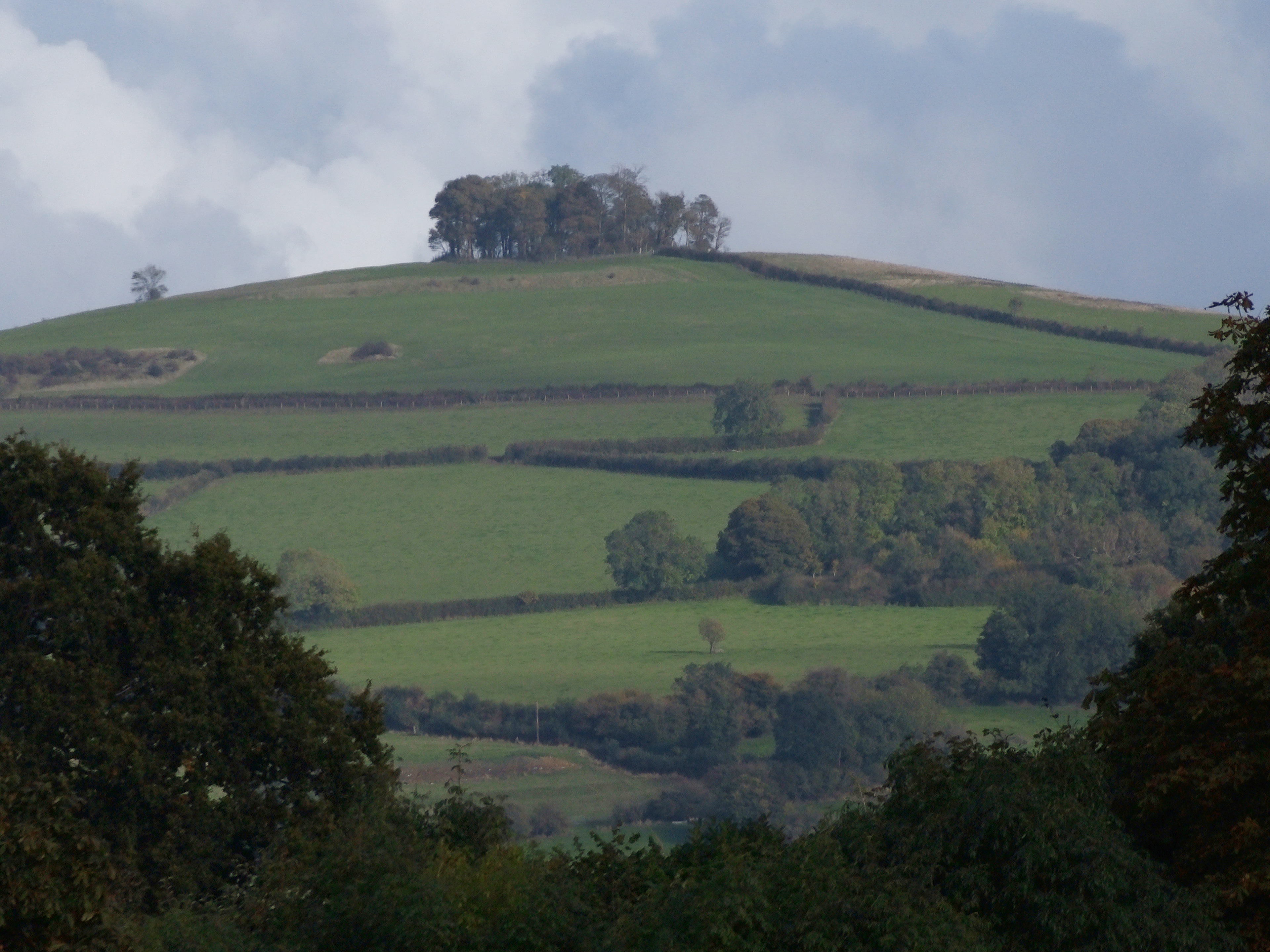
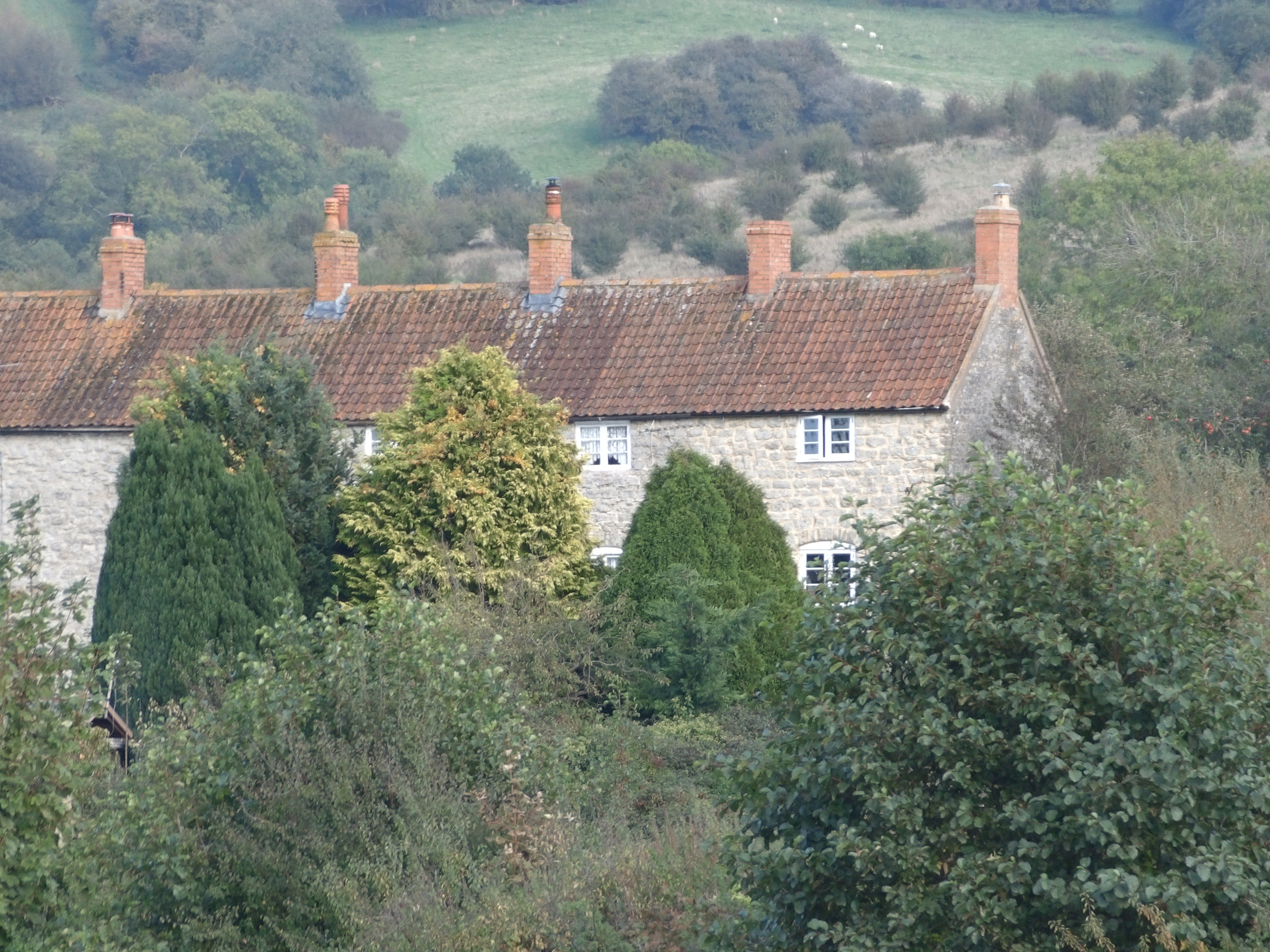
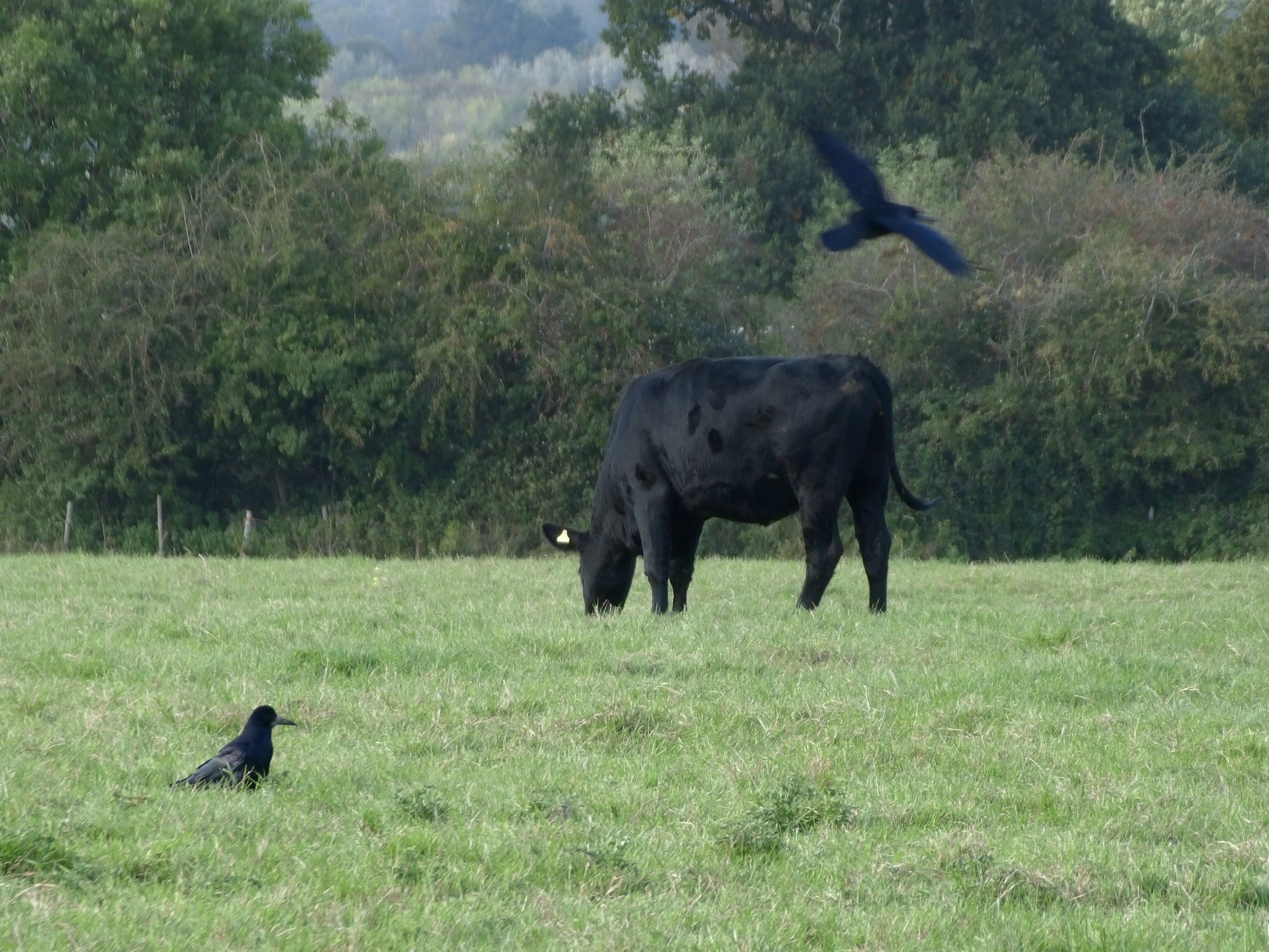
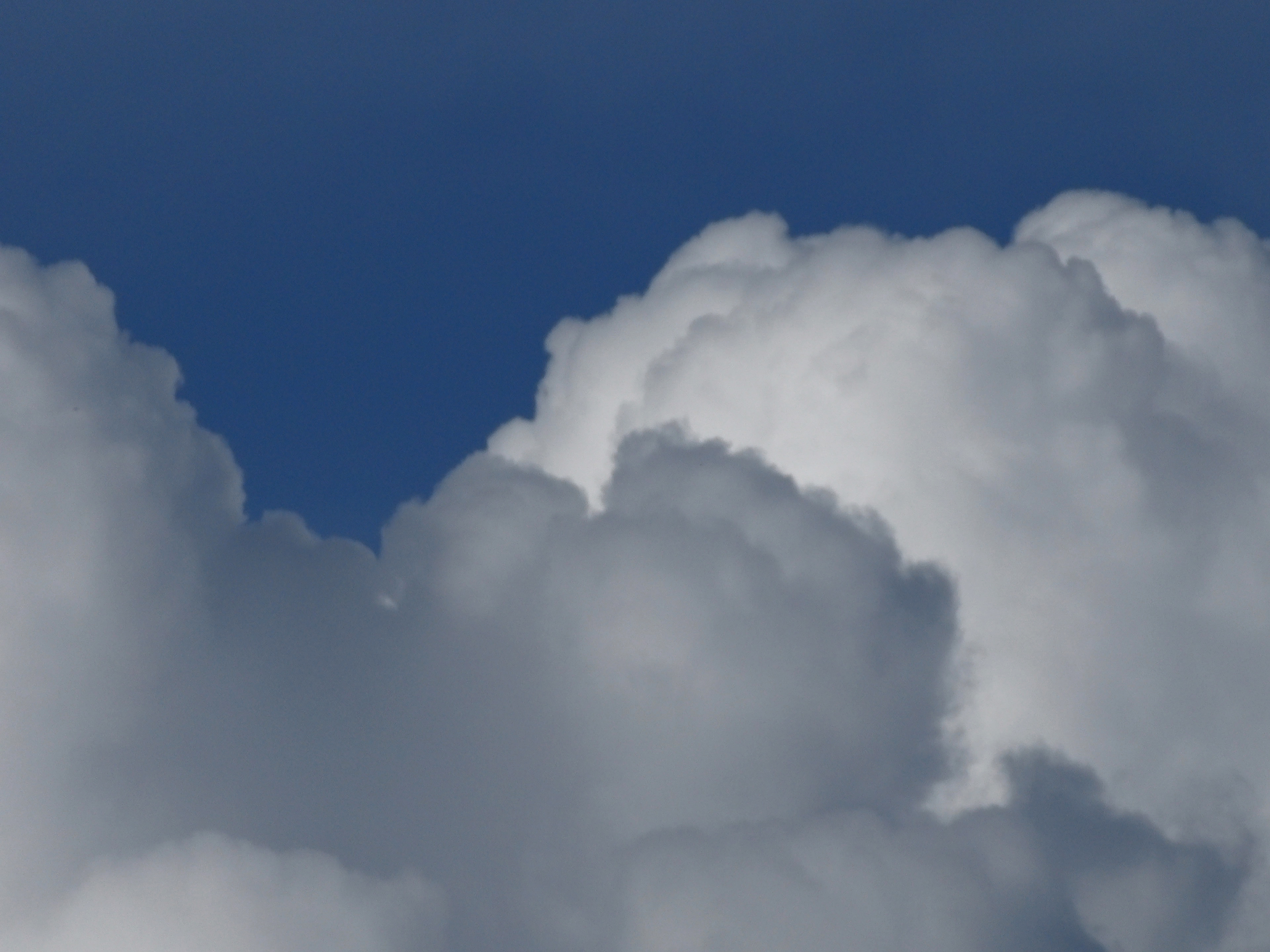
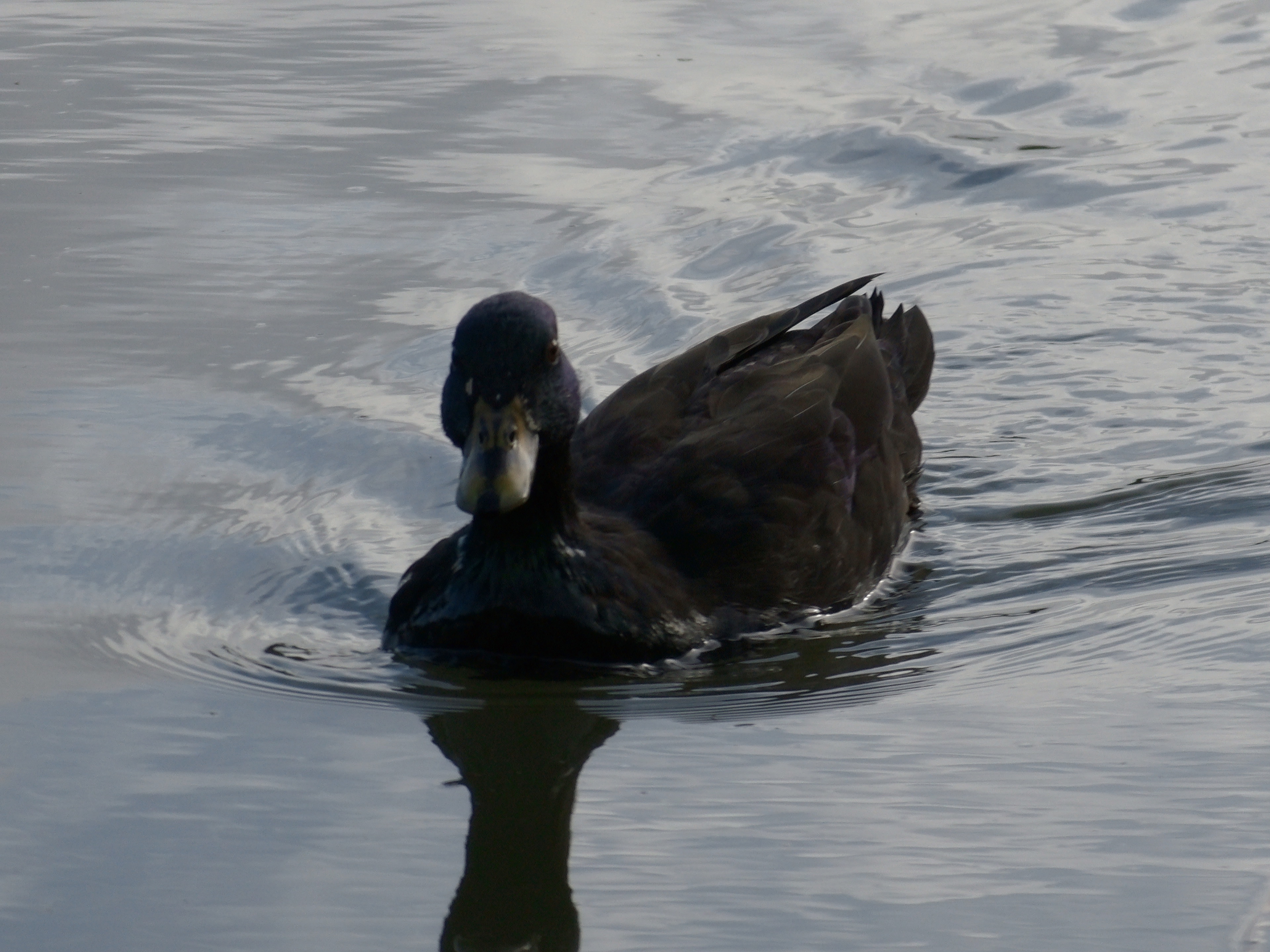
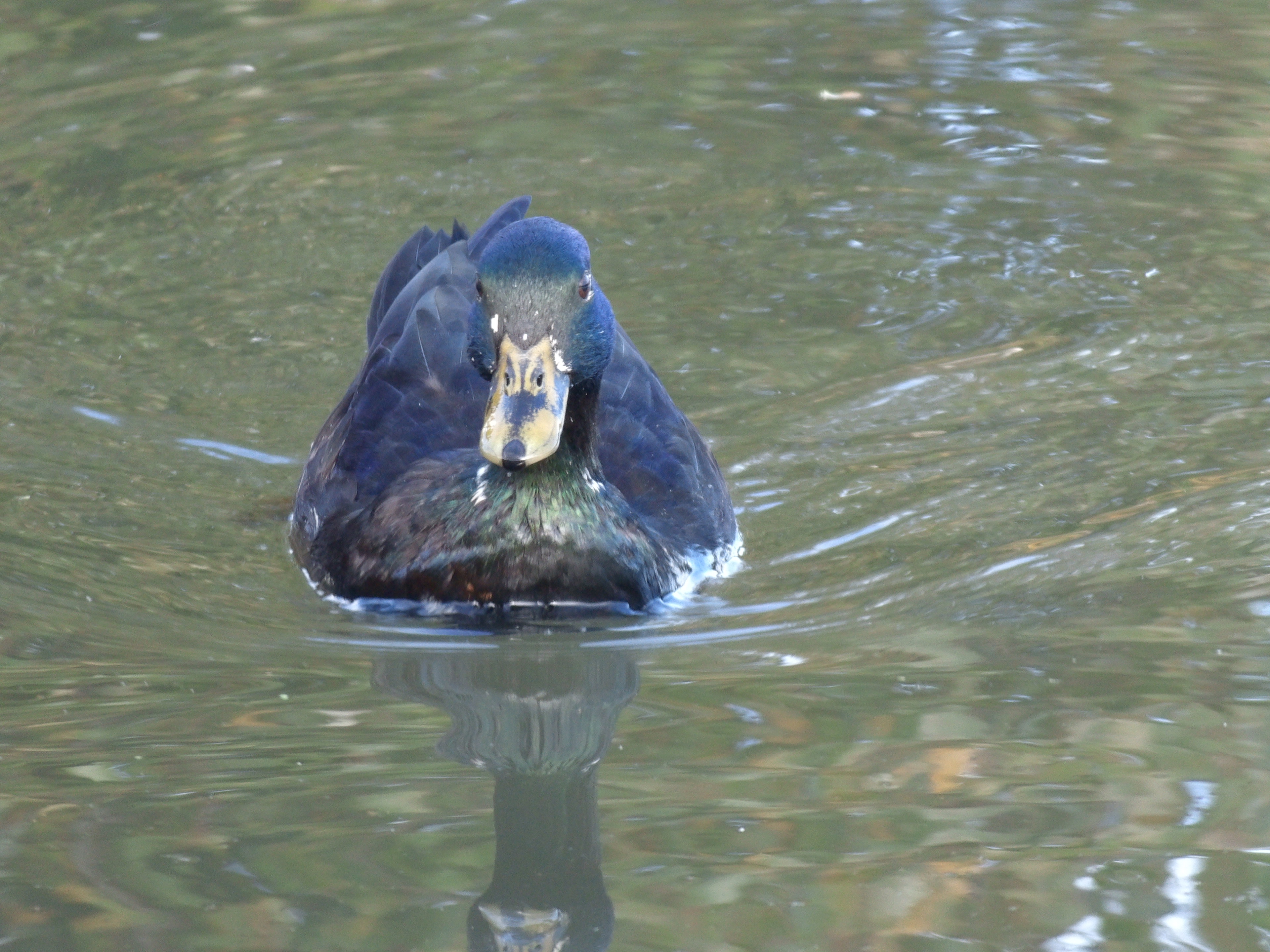
What about video? Well, trying to record a decent video handheld at 400mm on the PowerShot Golf was challenging, verging on the frustrating, as you’d rarely shoot at 400mm to shoot any video on a proper camera. Or if you did you’d be using your camera and big lens on a tripod for steady compositions.
It’s not good golfing etiquette or safe to pause mid round to take videos while on the golf course, so I’d only video myself or friends when they’re hitting balls on the driving range, usually when one of us is working on swing fixes. To do that you need to be able to focus closer, and there wasn’t enough room to stand back on the driving range to use the Canon PowerShot Golf. So we just use our iPhones to take photos or videos.
Images and videos are saved on a microSDHC card (sold separately) slotted inside the camera. You can use a cable attached to your smartphone and use the Canon Connect app to view images that way, but I simply used the microSDHC card card (in the SD card sized adapter) in a card reader and downloaded them to my laptop.
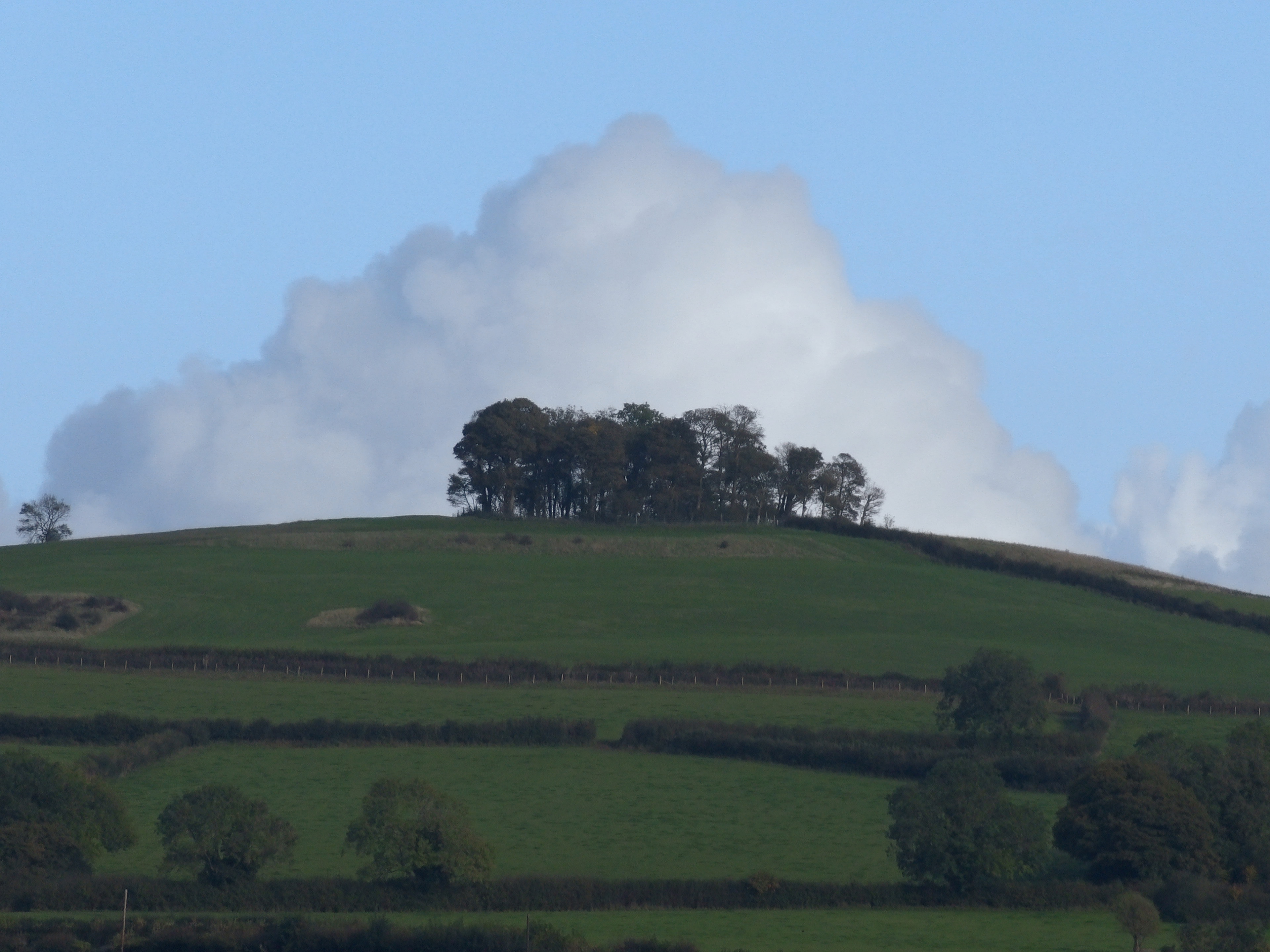

The Canon PowerShot Golf has a rechargeable battery built in. I found battery power was okay, getting a full 18 holes (about four and a half hours) and taking a handful of photos occasionally. I’m guessing it’s the EVF and taking photos that eats the power. So it’s good there’s a battery power icon in the bottom right corner.
You could probably get two rounds of golf out of a fully-charged battery (as long as you don’t take lots of photos or video) before you’d need to charge it up again. Canon says viewing time should last approx 200 minutes, and be able to take approx 200 JPGs.
Compared to a Bushnell rangefinder I use, I’ve had it for a few years (note I don’t use it every shot as I have a GPS watch to give me yardages) and it’s still registering full power from the Duracell CR2 battery.
Disappointingly, Canon doesn’t supply a charger, not even a lead - but most of us have a USB-C to USB lead and power pack (I used my laptop charger cable, with an iPhone power pack) to be able to charge devices like this. To be fair, the Canon PowerShot Golf was very quick to charge up again, only taking about 30-45 minutes to go from half to full charge again.
Canon PowerShot Golf: Verdict
Canon has used its wealth of camera tech and knowhow to create a unique device for golfers, a slick rangefinder that doubles as a camera. Using the Canon PowerShot Golf on the course throughout several rounds of golf, I find it to be an excellent laser rangefinder. Thanks to a bright EVF and Image Stabilization, it’s a pleasure to use on the course to zap flags to obtain accurate yardage distances and helped me pick the right club for the shot. It’s sure to help lower my scores the more I use it. Whether I'll get much use out of the basic, functional camera itself for some simple on-course photos and videos is debatable, although it is cool to be able to capture images showing the flag and distances for your records. With tiny 12mm lens diameter, and 1/3-inch 11MP sensor, image quality and focusing for images is never going to be fantastic. Overall, the Canon PowerShot Golf is an attractive proposition for all golfers, and priced competitively when compared to traditional rangefinders.
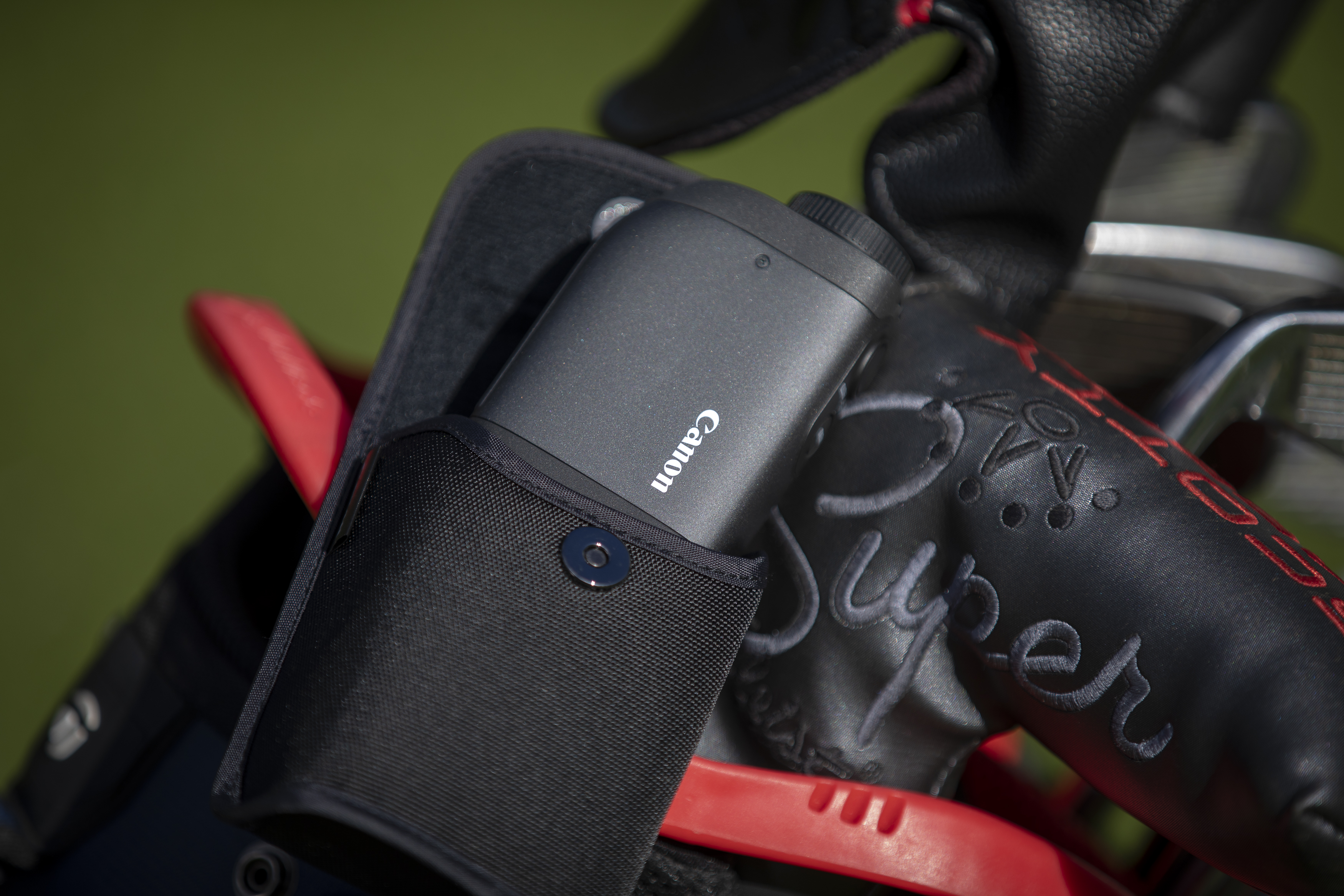
✅ Buy it...
- If you want a modern laser rangefinder with Canon's tech benefits built in
- You'd like a pocket-sized pal to help give you yardage info on the course
- You want to bring your scores down by helping to improve your golf-shot distance control
🚫 Don't buy it...
- If you want to take amazing action photos on the golf course
- If you don't play golf!







